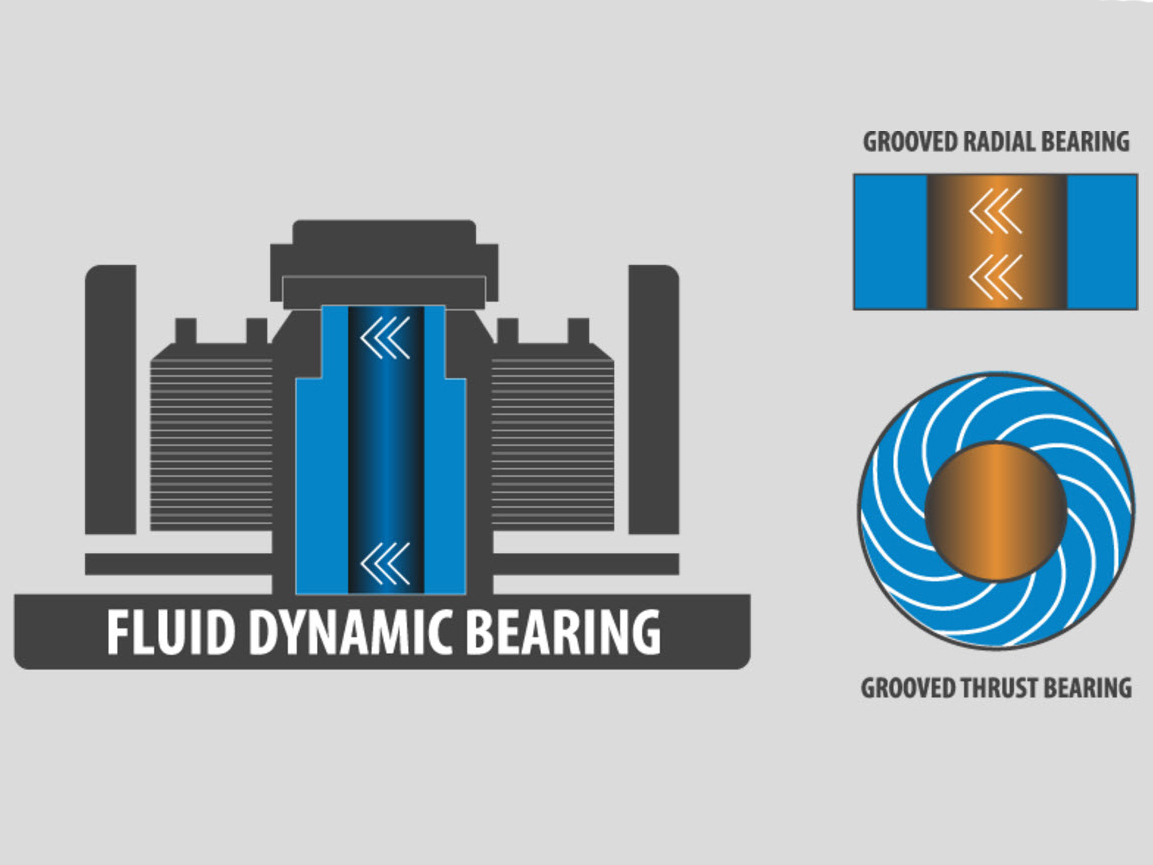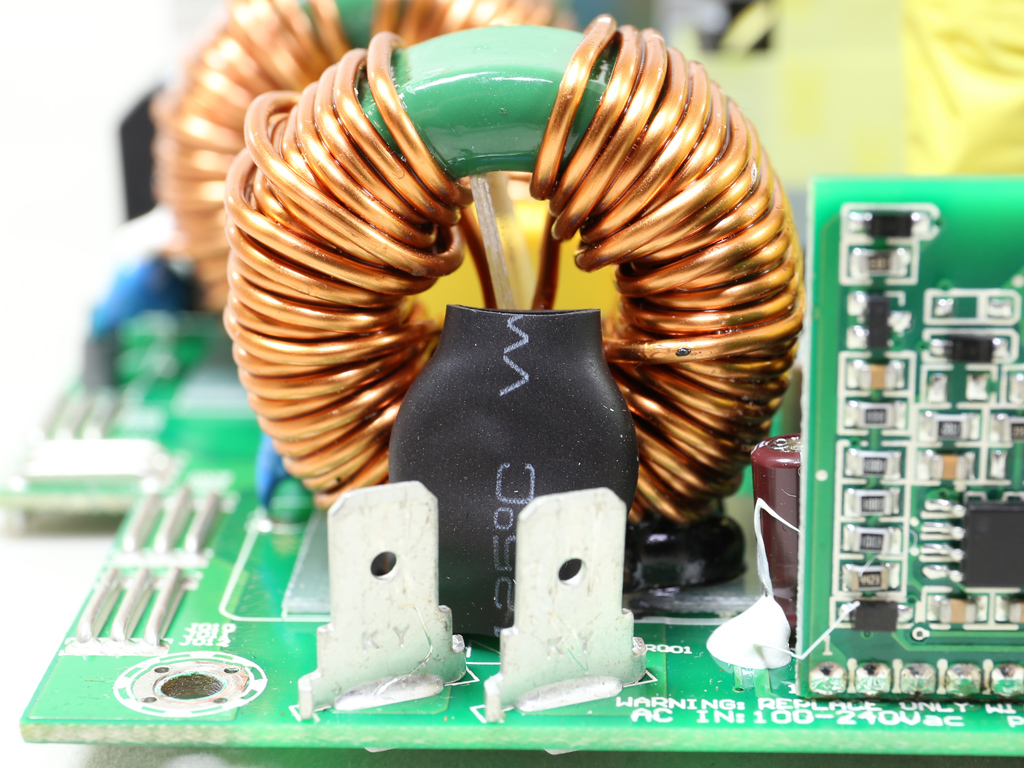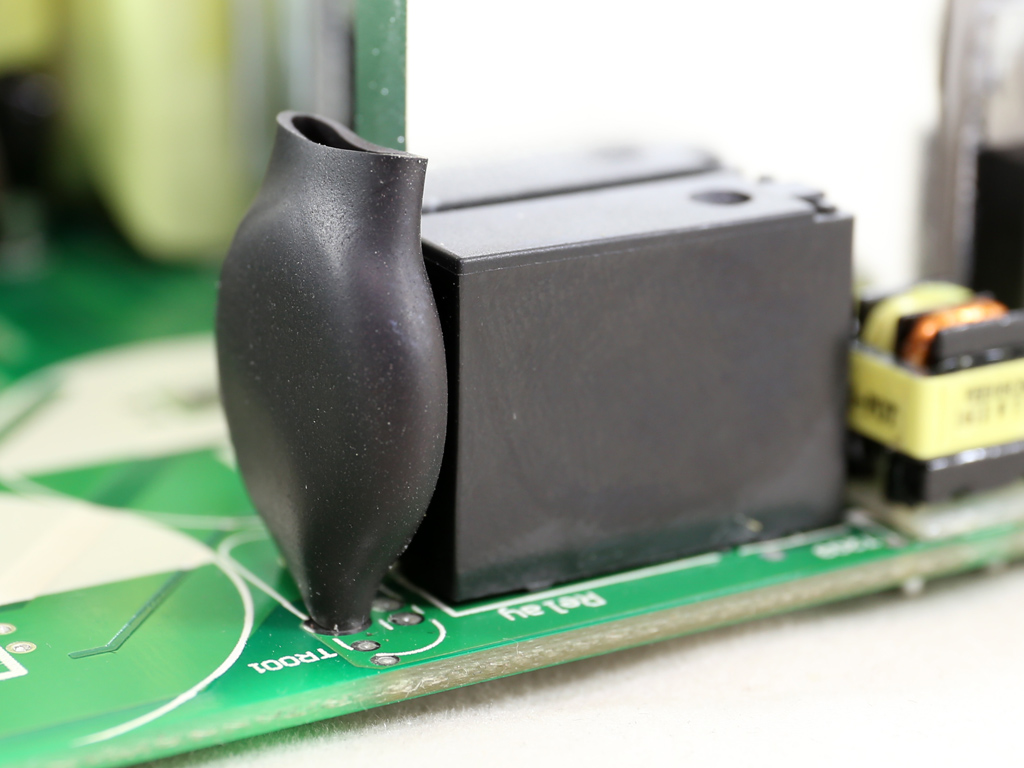Seasonic Prime Titanium 650W PSU Review
Seasonic jumps onto the 80 PLUS Titanium wagon with three new units that belong to its Prime family. The 650 W model is under our scope today. Besides high efficiency, it also offers great performance, quiet operation, and nice looks.
Why you can trust Tom's Hardware
A Look Inside And Component Analysis
Parts Description
Before proceeding with this page, we strongly encourage you to a look at our PSUs 101 article, which provides valuable information about PSUs and their operation, allowing you to better understand the components we're about to discuss. Our main tools for disassembling PSUs are a Thermaltronics soldering and rework station, and a Hakko FR-300 desoldering gun.
| Primary Side | |
|---|---|
| Transient Filter | 6x Y caps, 3x X caps, 2x CM chokes, 1x MOV |
| Inrush Protection | NTC Thermistor & Relay |
| Bridge Rectifier(s) | 2x Vishay LVB2560 (600 V, 25 A @ 105 °C) |
| APFC MOSFETs | 2x Infineon IPP50R140CP (550 V, 15 A @ 100 °C, 0.14 Ω) |
| APFC Boost Diode | 1x SCS110AG (600 V, 10 A @ 117 °C) |
| Hold-up Cap(s) | 2x United Chemi-Con (400 V, 450 uF each or 900 uF combined, 105 °C, CST) |
| Main Switchers | 4x Infineon IPP50R199CP (550 V, 11 A @ 100 °C, 0.199 Ω) |
| Drivers For Main Switchers | 2x Silicon Labs Si8230BD |
| APFC Controller | ON Semiconductor NPC1654 |
| Switching Controller | Champion CM6901 |
| Topology | Primary side: Full-Bridge & LLC Resonant Converter Secondary side: Synchronous Rectification & DC-DC converters |
| Secondary Side | |
| +12V MOSFETs | 4x Fairchild FDMS015N04B (40 V, 100 A @ 25 °C, 1.5 mΩ) |
| 5V & 3.3V | DC-DC Converters: 6x Infineon BSC0906NS (30 V, 40 A @ 100 °C, 4.5 mΩ) PWM Controller: APW7159 |
| Filtering Capacitors | Electrolytics: Nippon Chemi-Con (105 °C, KZE, KZH) 1x Rubycon (5VSB circuit, 105 °C, YXD) Polymers: FPCAP, Nippon Chemi-Con |
| Supervisor IC | Weltrend WT7527V (OVP, UVP, OCP, SCP, PG ) |
| Fan Model | Hong Hua HA13525M12F-Z (135 mm, 12 V, 0.36 A, 1800 RPM, Fluid Dynamic Bearing) |
| 5VSB Circuit | |
| PWM Controller | Leadtrend LD7750R |
| MOSFET | STU6N65K3 (650V, 3A @ 100 °C, 1.3 Ω) |
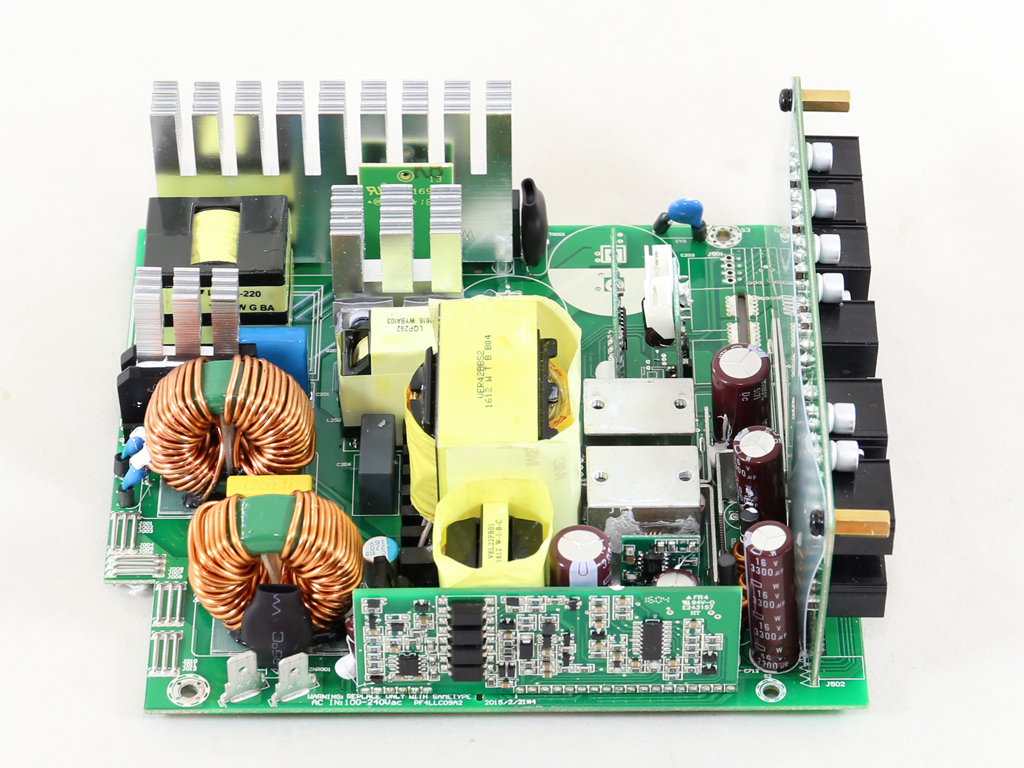
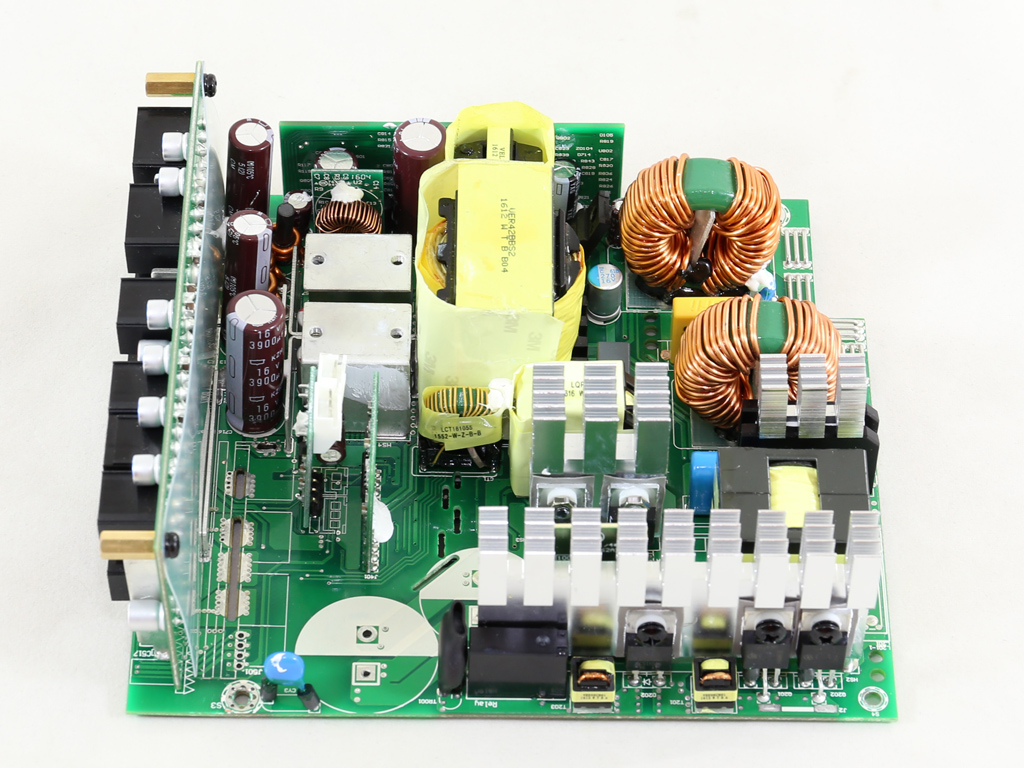
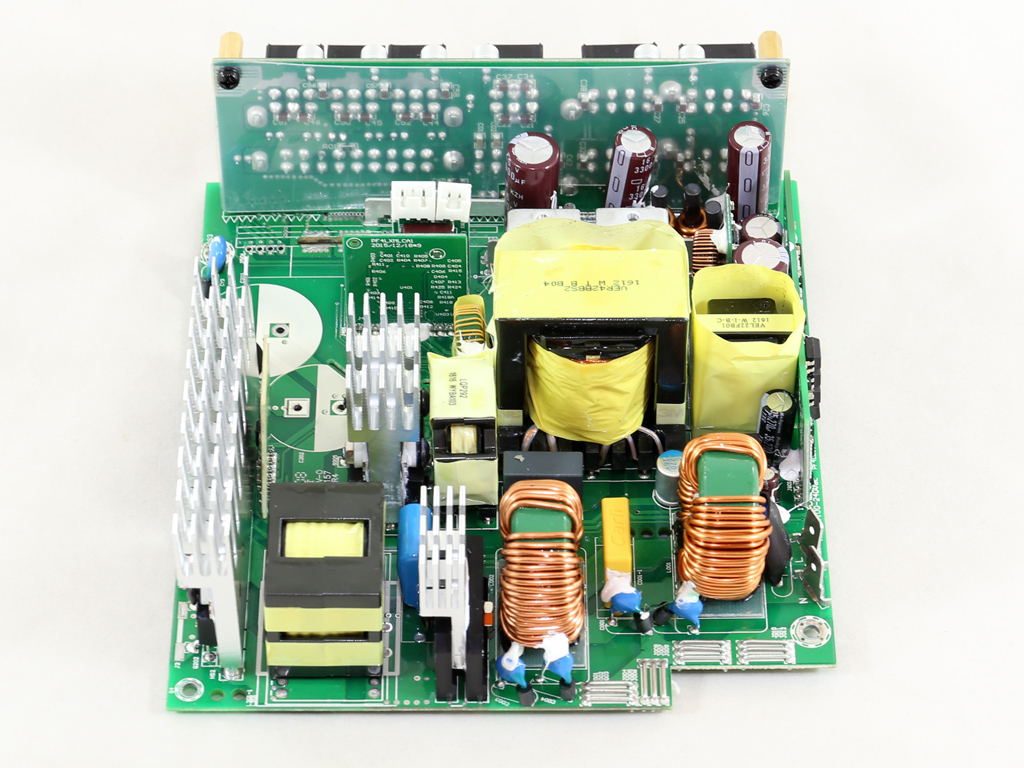
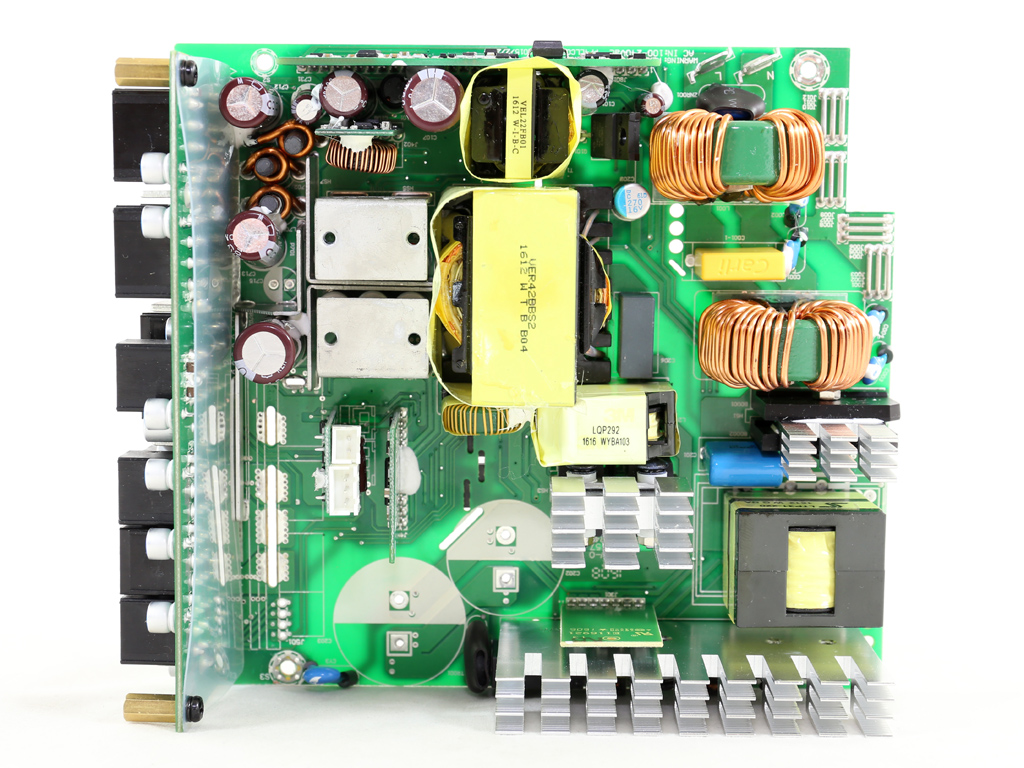
This is a new platform from Seasonic, featuring a cleaner design than the previous XP2S, KM3S, and XP3 high-end configurations. No power cables are used internally, since the modular panel is connected to the main PCB through copper plates offering less resistance. So, less energy is lost on them, especially at higher loads. Moreover, Seasonic finally decided to use a >120 mm fan, so we expect the noise output to be much lower compared to its previous high-end offerings. The 135 mm fluid dynamic bearing (FDB) fan is provided by Hong Hua.
Briefly, as the shaft rotates in an FDB fan, lubrication oil drifts along the grooves of the bearing sleeve under high pressure, creating a thin layer between the bearing and shaft. This greatly reduces friction. As the rotational speed increases, the oil's pressure goes up as well, preventing the shaft from coming in contact with the bearing. An FDB fan's only weakness is during the start-up phase, when the speed of the shaft is low, resulting in low oil pressure that can allow for friction between the shaft and bearing. This might be a reason to avoid FDB fans in PSUs featuring a semi-passive mode, causing the fan to start and stop frequently. A long-lasting passive mode can address this by mitigating the constant start/stop cycle.
Seasonic doesn't use a bridgeless APFC design like Flextronics and Super Flower to achieve high efficiency levels. Instead, it chose to push the boundaries of analog circuits with a simpler design featuring standard bridge rectifiers. Apparently, Seasonic's engineers believe that bridge rectifiers aren't responsible for high energy losses, and that there are other ways to increase efficiency besides using more FETs in the APFC converter. The final result definitely proves their point, since the SSR-650TD is among the most efficient PSUs that we have ever measured.
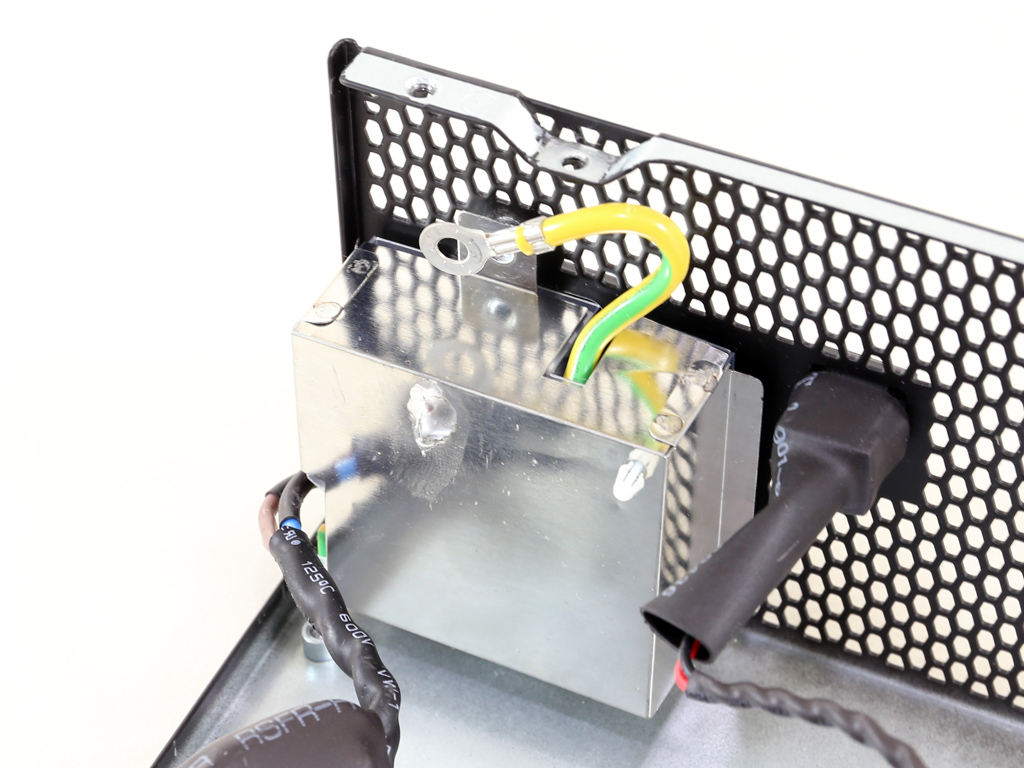
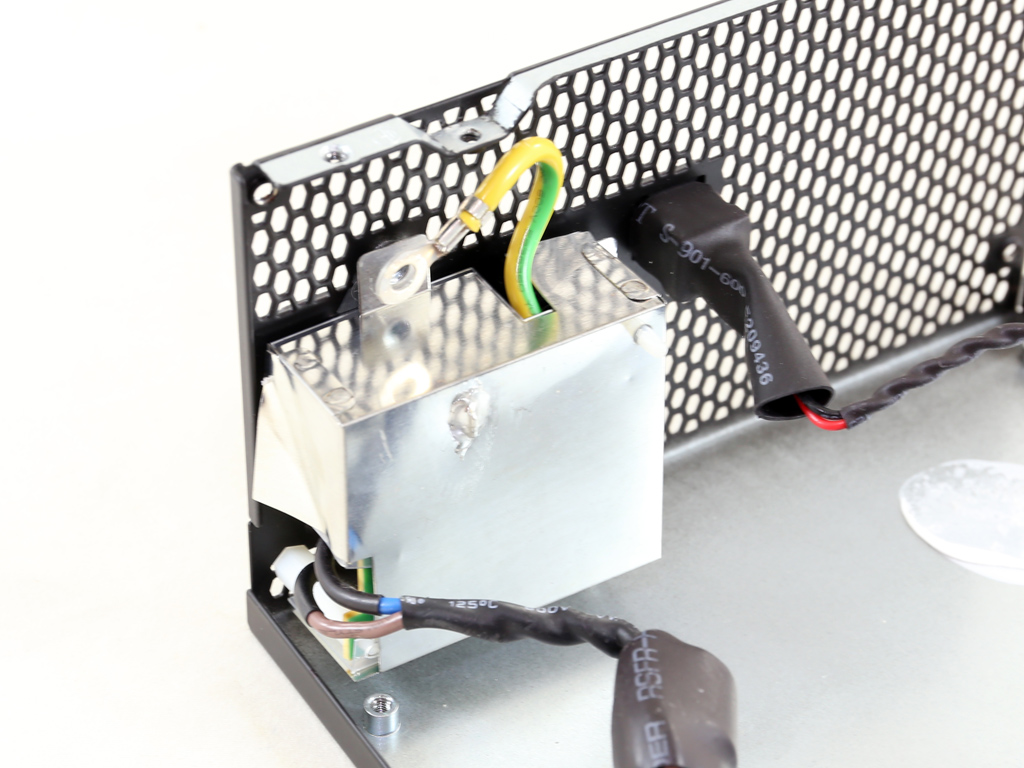
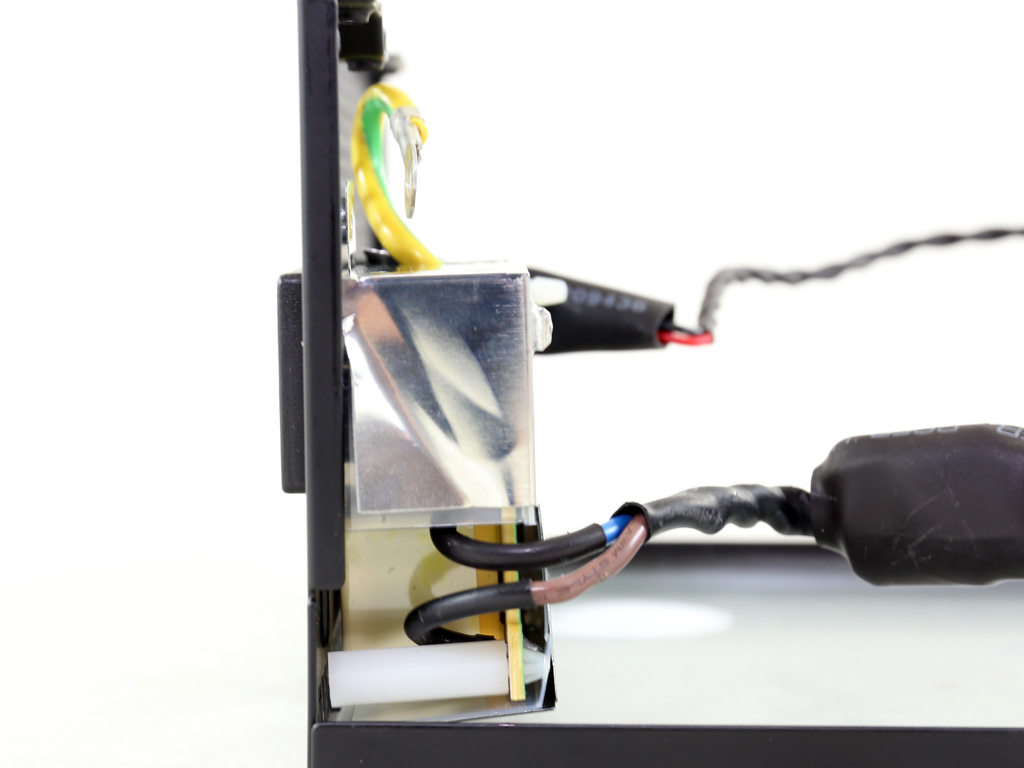
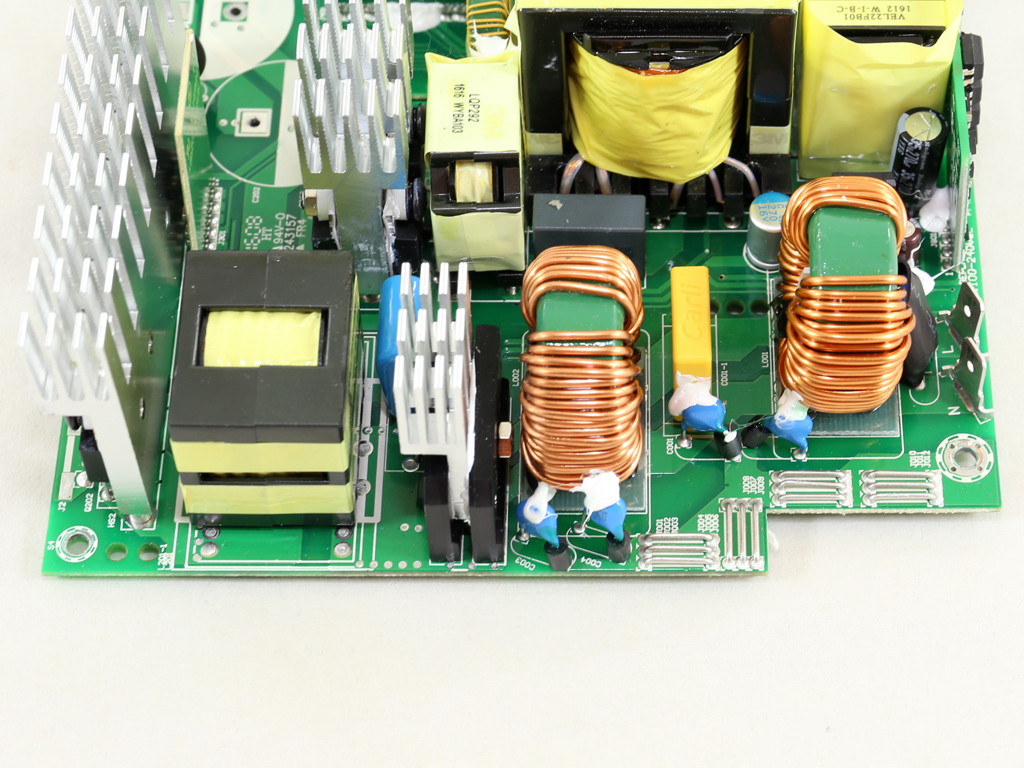
The first part of the transient filtering stage is hosted on a small PCB that's properly shielded against EMI. It consists of two X and two Y caps. As usual, the transient filter continues on the main PCB with four more Y caps, an additional X cap, two CM chokes, and an MOV. All in all, this filter is complete; it is equipped with more components than it requires.
The main power cables are connected to the main PCB through spade terminals. This means less trouble for us, since we don't have to desolder thick wires.
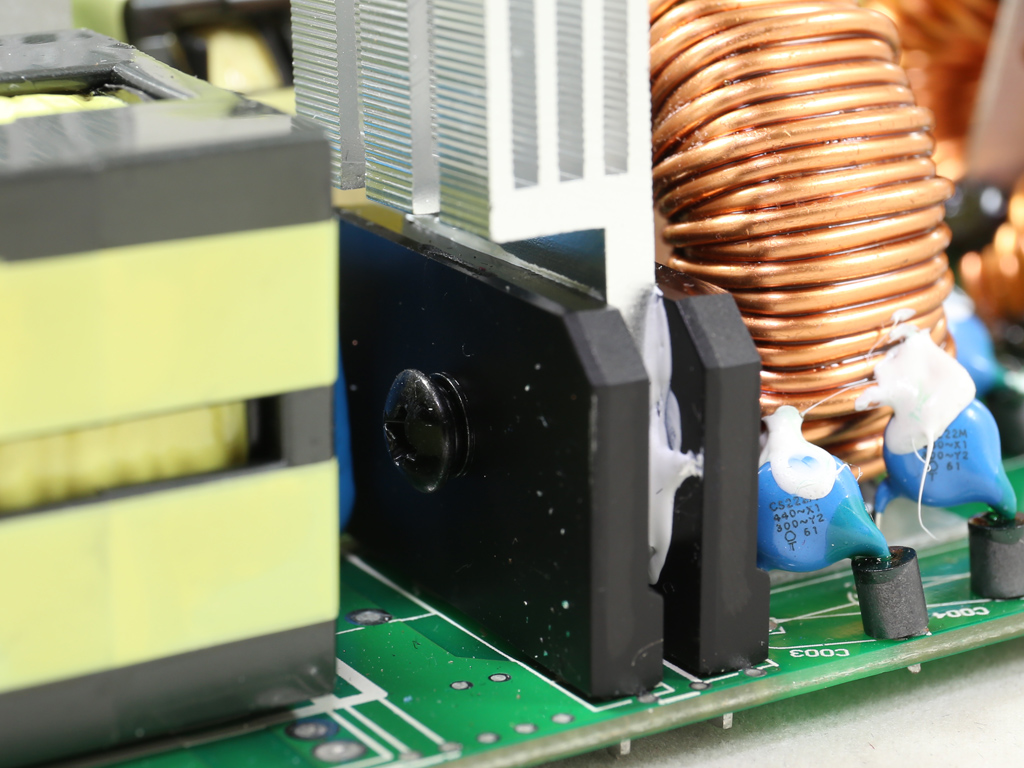
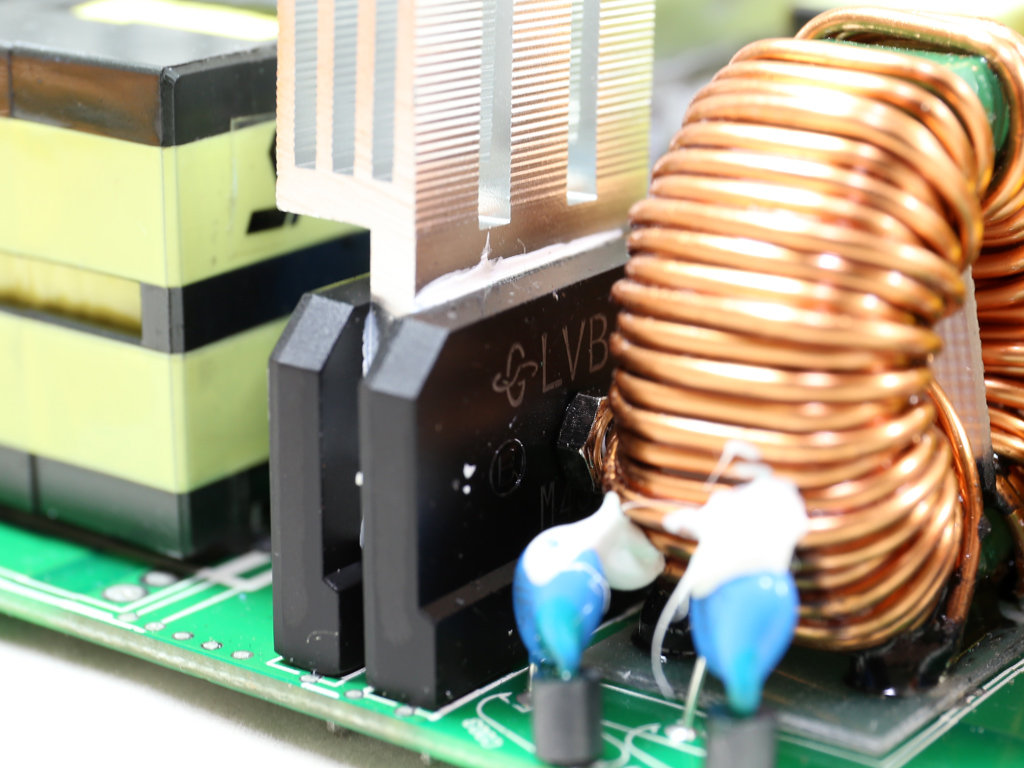
The bridge rectifiers are a couple of Vishay LVB2560s that can handle up to 50 A of current. Obviously, they are overkill for a 650 W PSU. Seasonic could use smaller rectifiers and save some money.
Get Tom's Hardware's best news and in-depth reviews, straight to your inbox.
This is the NTC thermistor that provides protection against large inrush currents. It is accompanied by a bypass relay, which allows it to cool down faster and helps minimize energy losses, since it isolates the thermistor from the circuit once the start-up phase finishes.
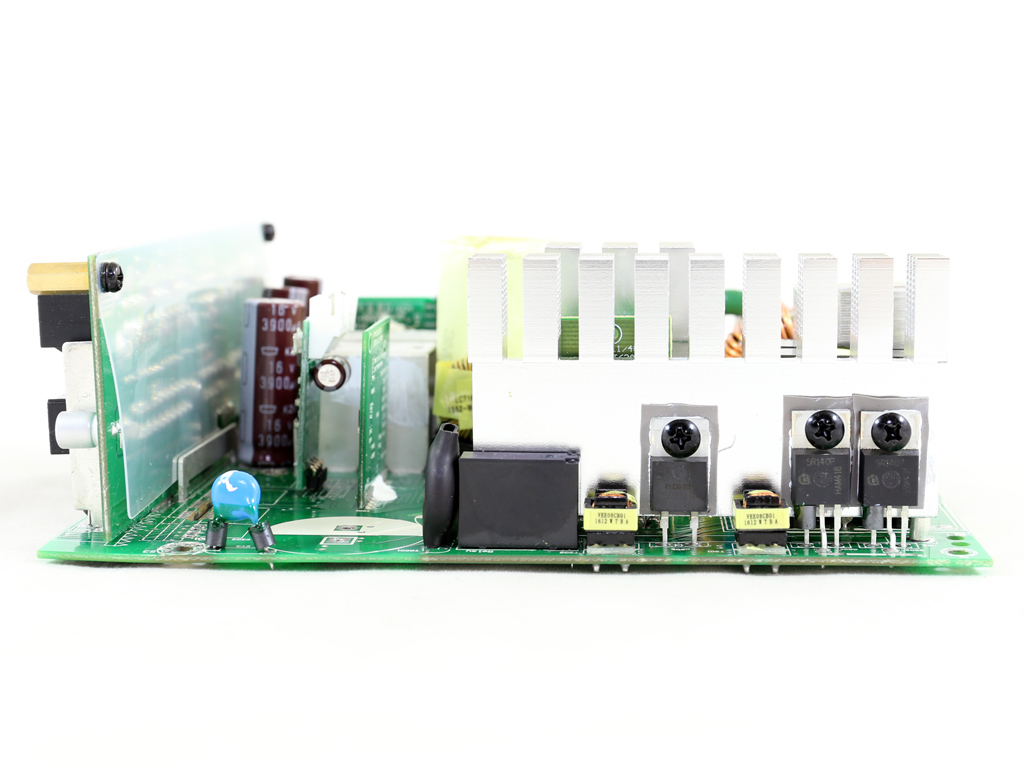
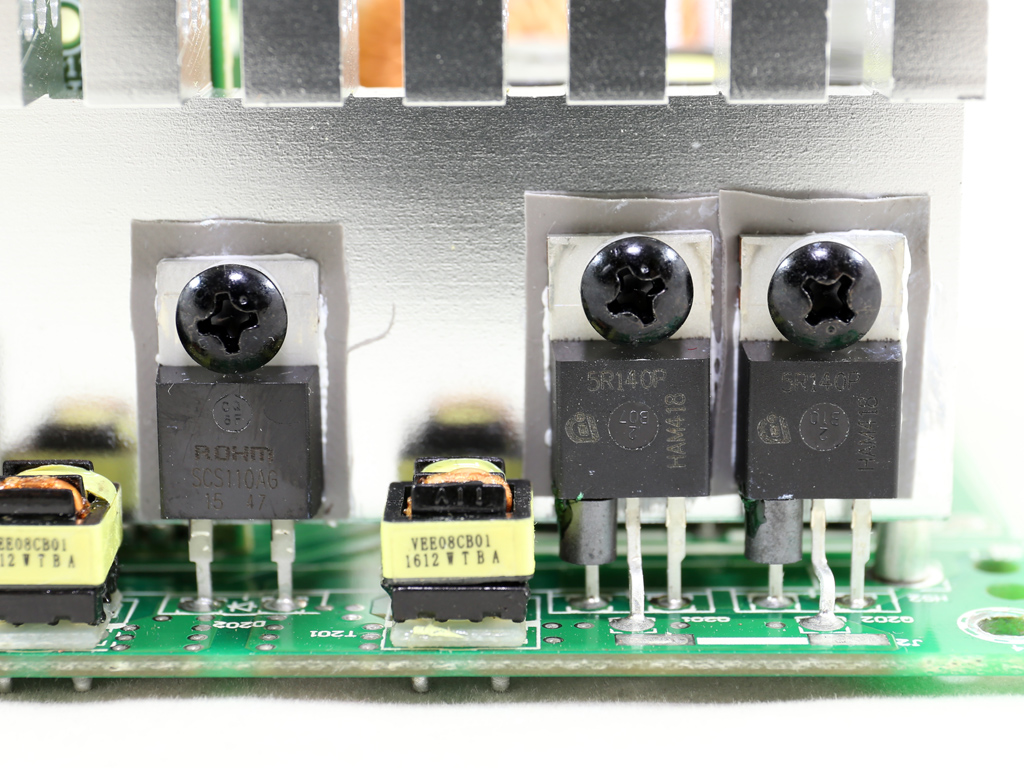
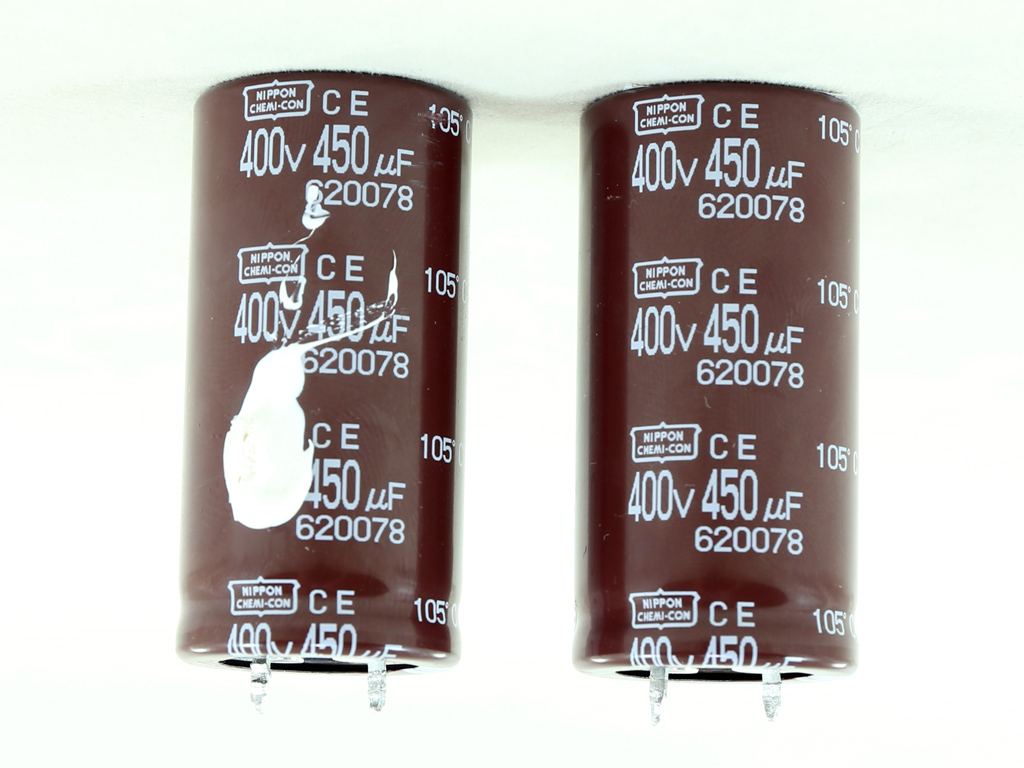
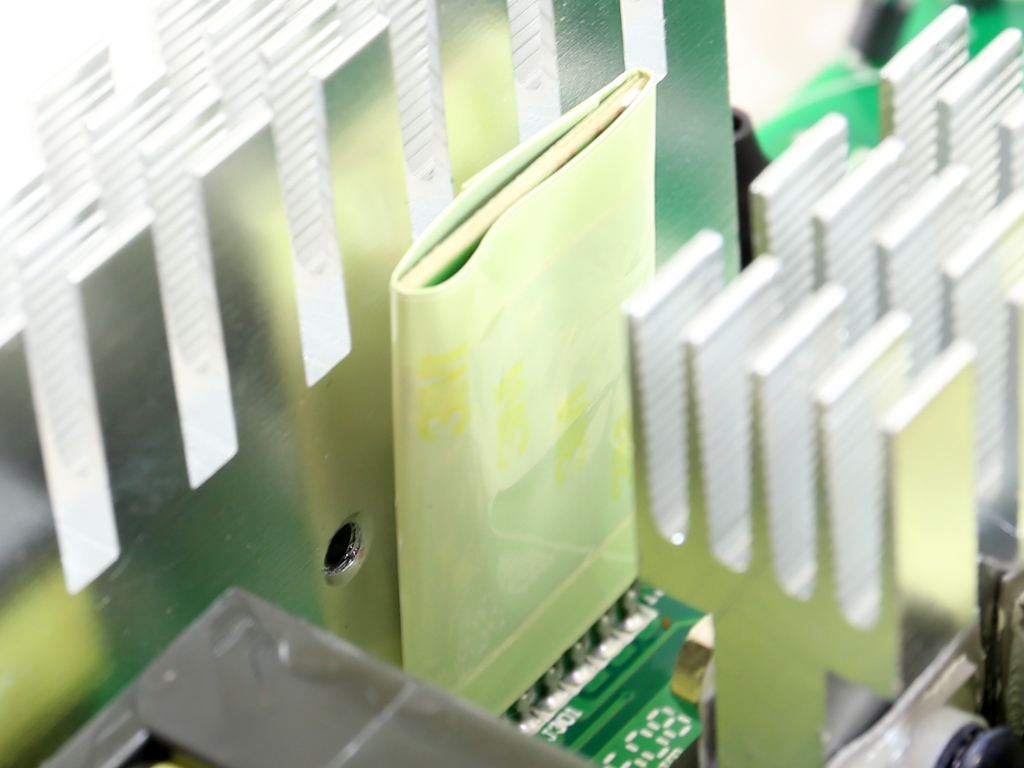

The APFC converter is reviewer-friendly: all of its parts are exposed except the PFC controller. In this circuit, two Infineon IPP50R140CP (550 V, 15 A @ 100 °C, 0.14 Ω) FETs are used along with a single SCS110AG (600 V, 10 A @ 117 °C) boost diode. The bulk caps are provided by United Chemi-Con (400 V, 450 uF each or 900 uF combined, 105 °C, CST) and their combined capacity is very large for a mid-capacity PSU. Seasonic speaks of a greater than 30 ms hold-up time, while the ATX spec only requires 17 ms. We wonder why Seasonic's engineers wanted to achieve such a long hold-up time, since this can affect efficiency as more energy is lost on the large bulk caps. Finally, the PFC controller is installed on a small PCB that's covered by tape. It is provided by ON Semiconductor, and its model number is NPC1654.
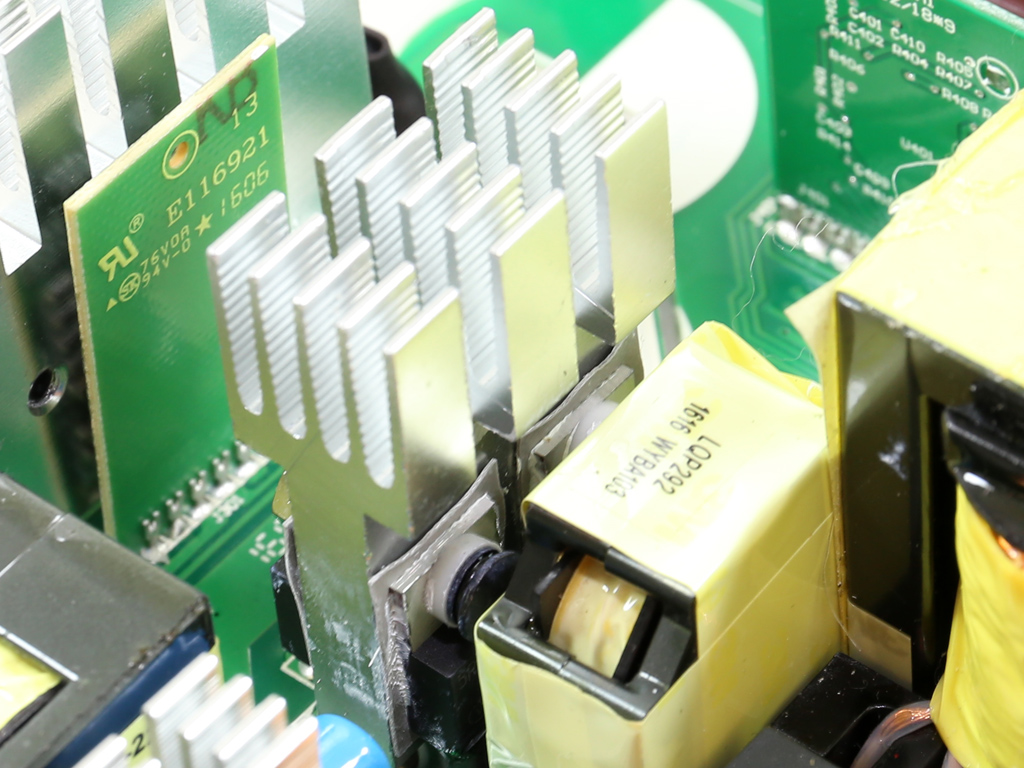
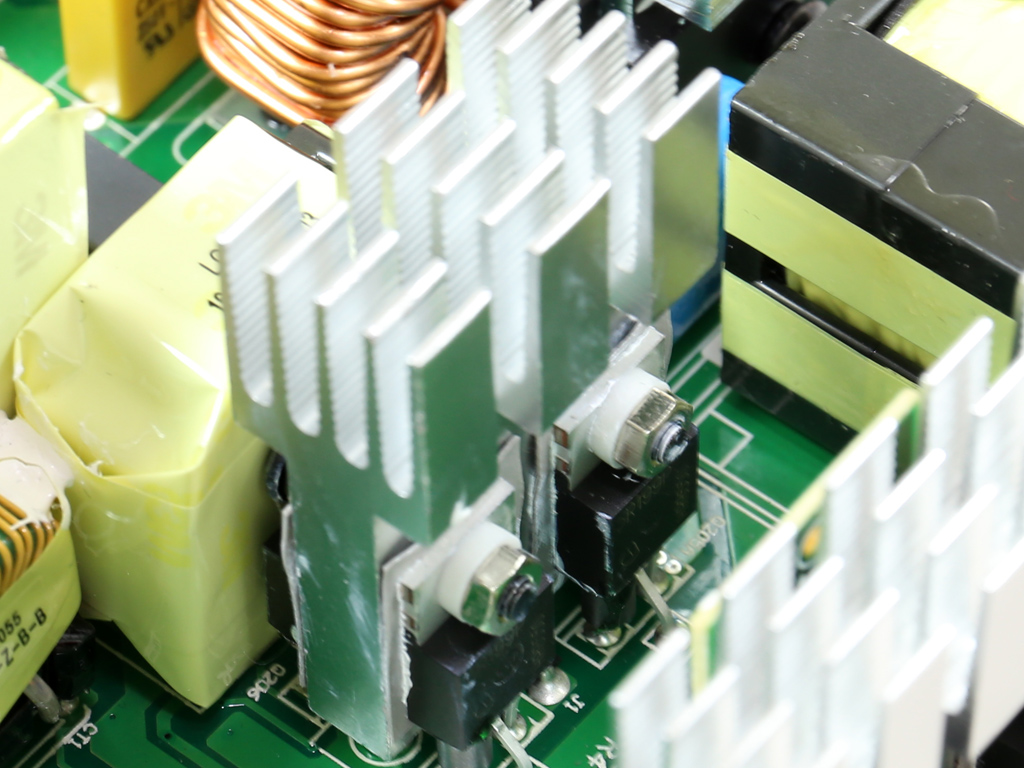
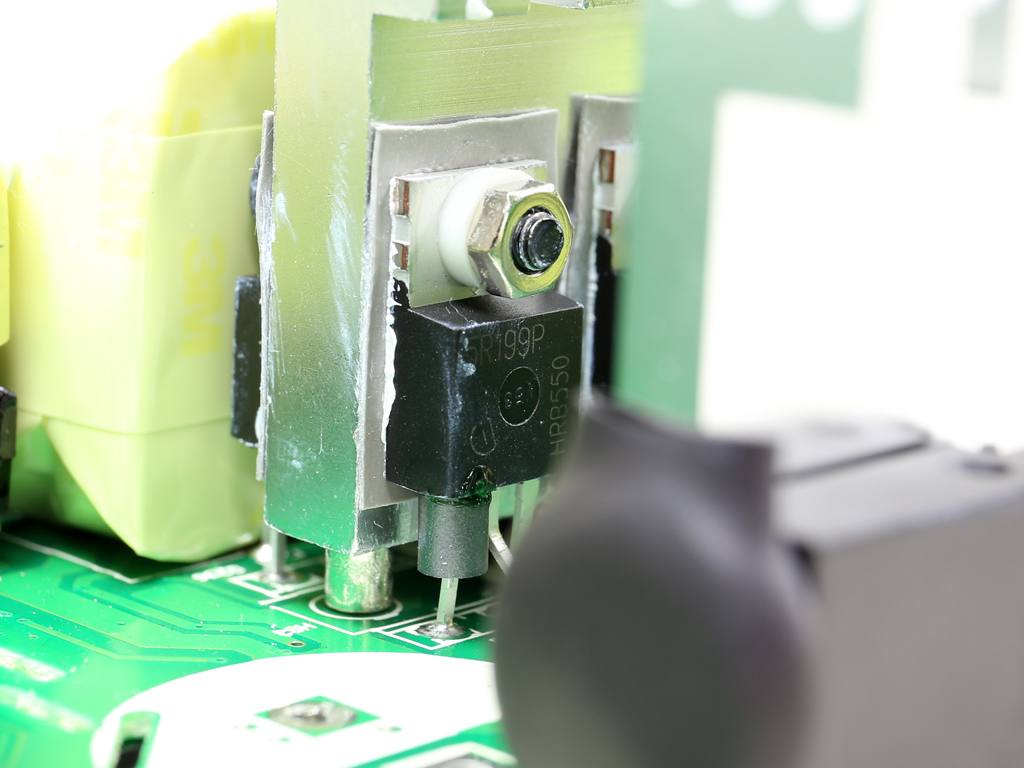
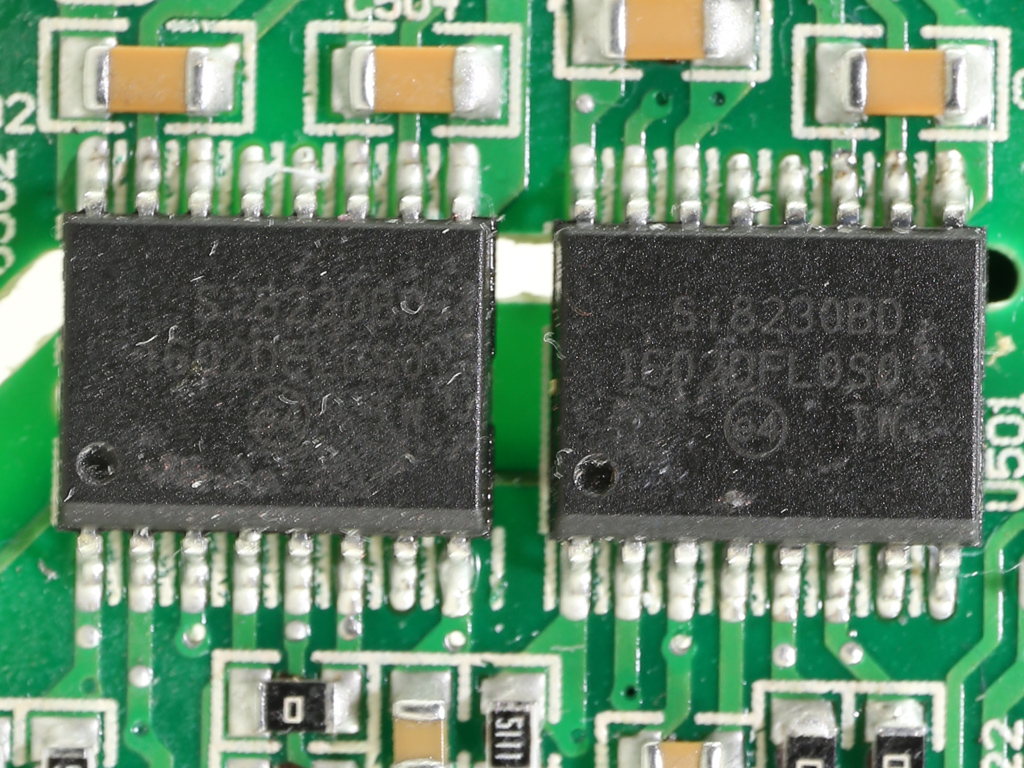
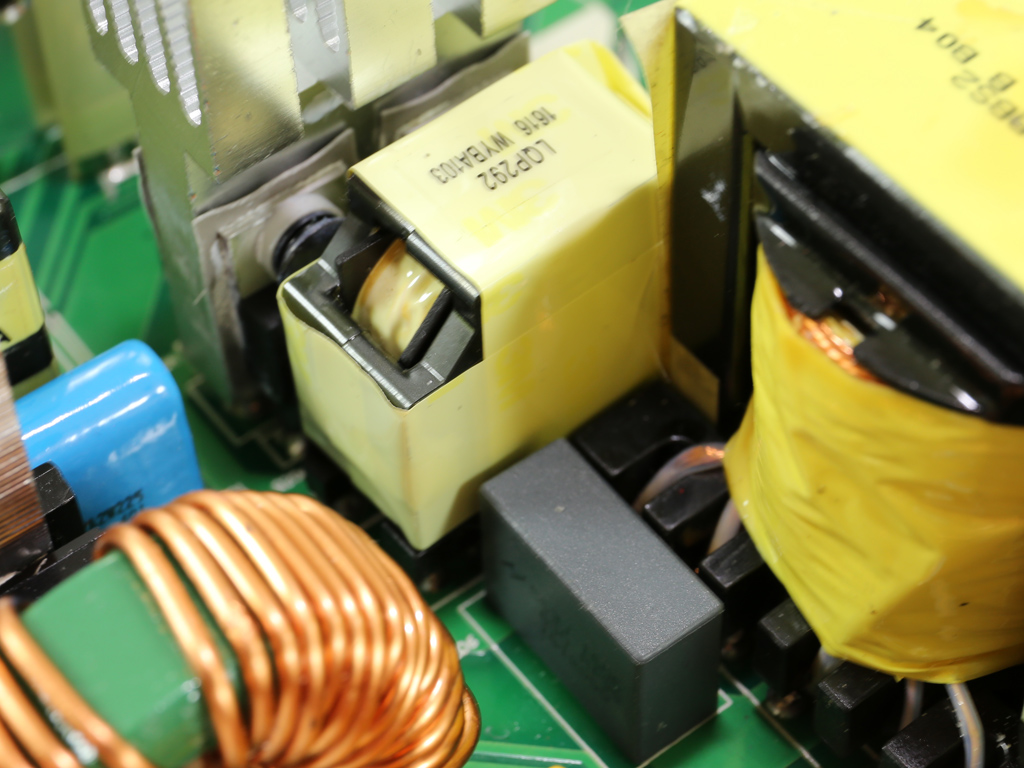
The primary switchers are four Infineon IPP50R199CP (550 V, 11 A @ 100 °C, 0.199 Ω) FETs configured into a full-bridge topology. All primary FETs are bolted on a dedicated heat sink, while an LLC resonant converter is used to provide a significant efficiency boost. Finally, the driver ICs that handle the main FETs are two Silicon Labs Si8230BD ICs; they're installed on the solder side of the main PCB.
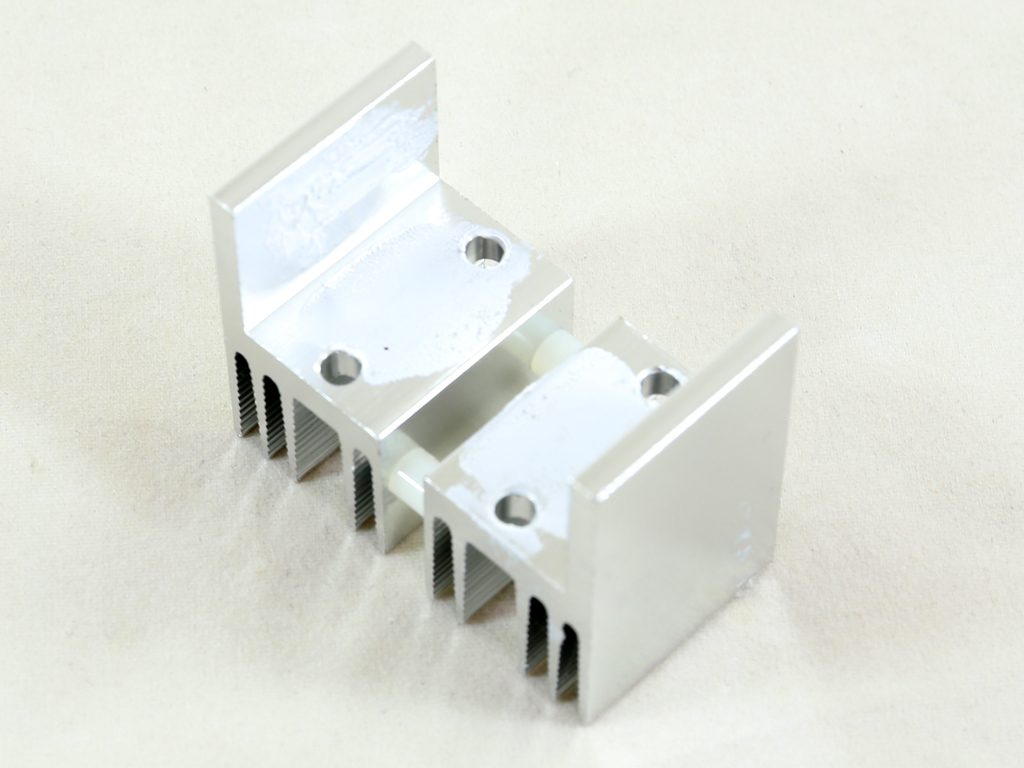
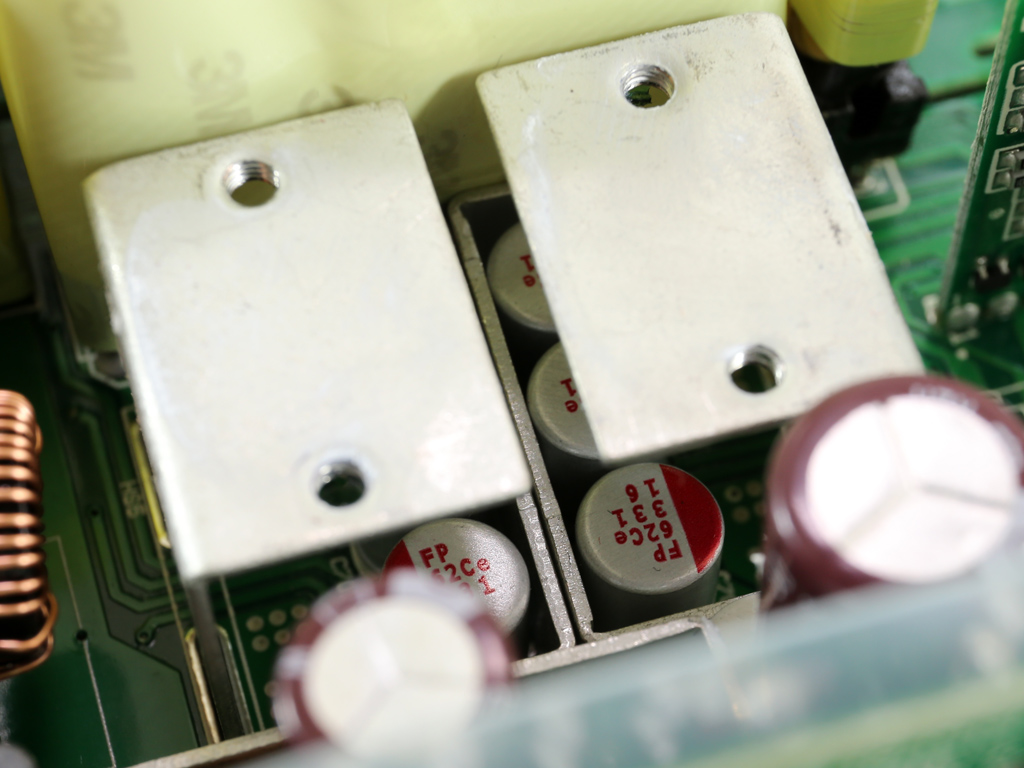
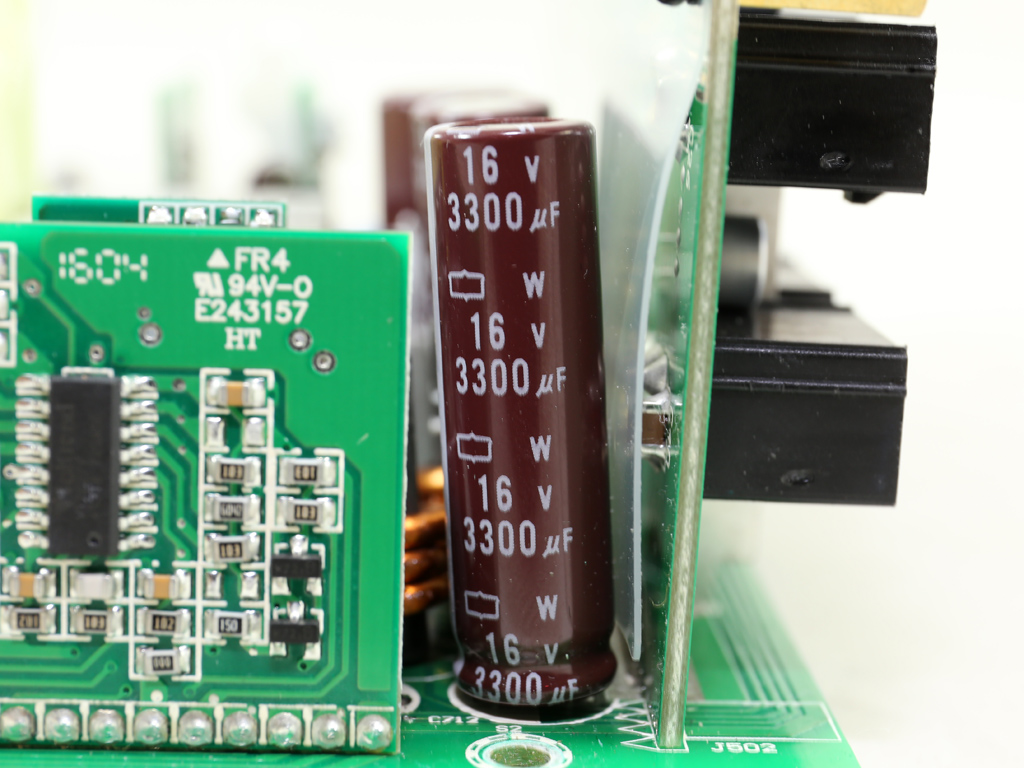
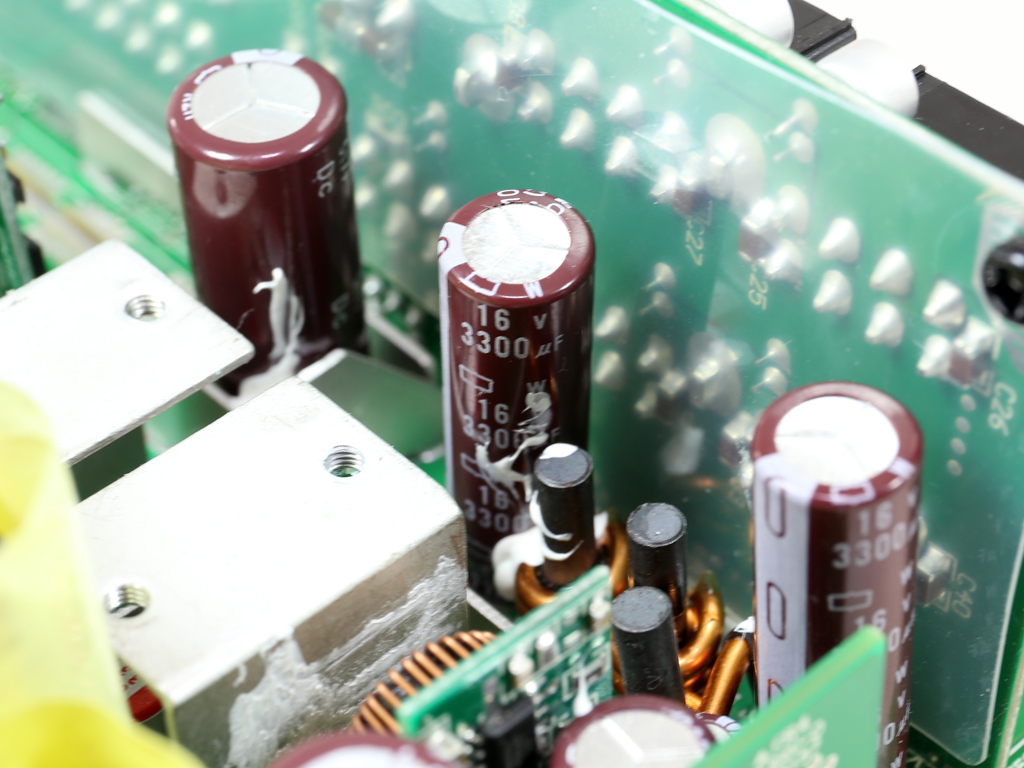

On the secondary side there is a small heat sink, empty of components, which actually consists of two parts bolted together with screws. Seasonic uses thermal conductive grease between those parts to increase the heat sink's efficiency. Underneath it, a series of polymer caps (provided by FPCAP) filter the +12V rail along with several Chemi-Con electrolytic caps. As you'd expect in this price range, the capacitor choice is top-notch. FPCAP now belongs to Nichicon, and it is well known for its high-quality products.
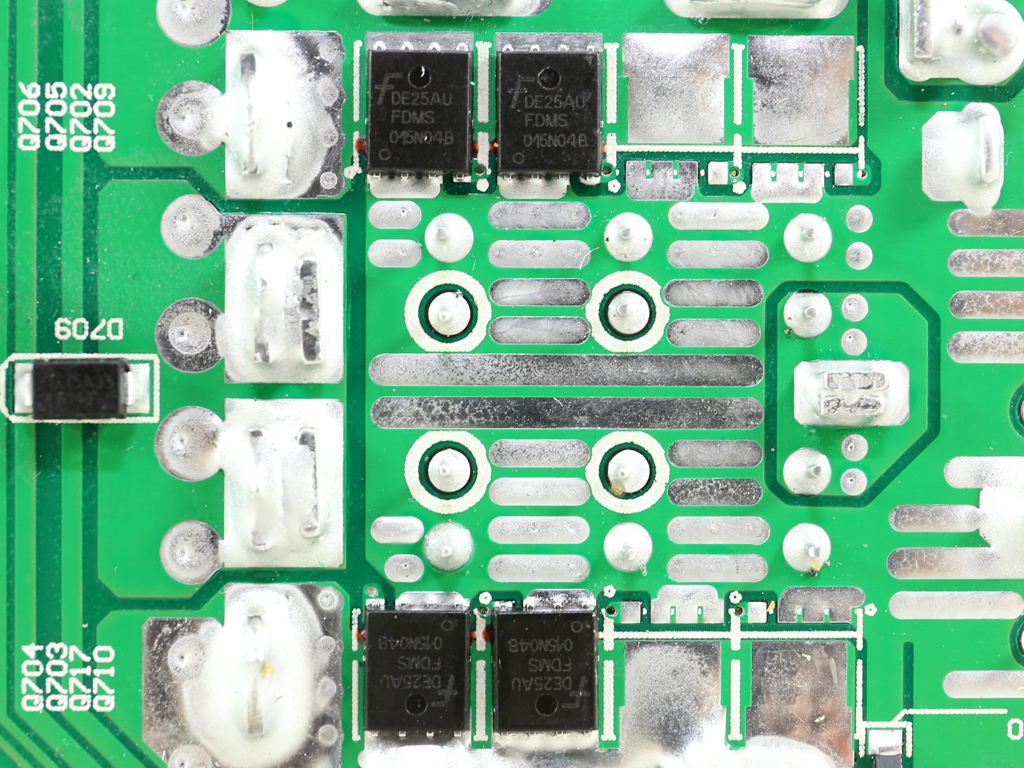
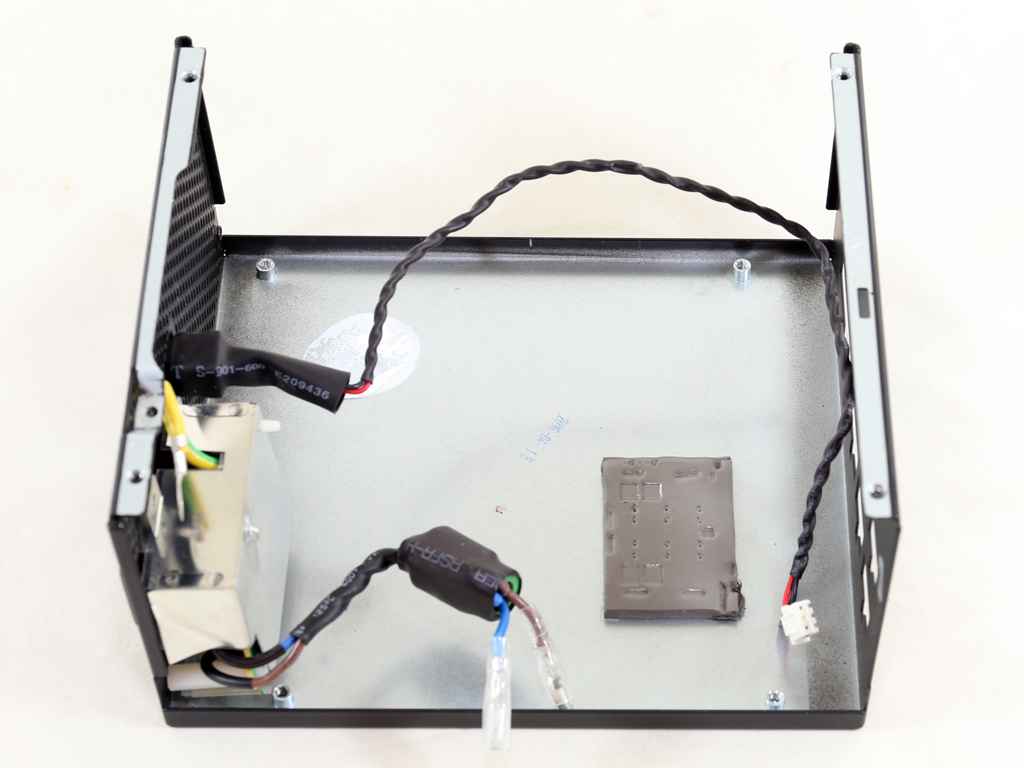
The +12V rail is regulated by four Fairchild FDMS015N04B (40 V, 100 A @ 25 °C, 1.5 mΩ) FETs. In addition to the heat sink described above, they're also cooled down by the chassis.
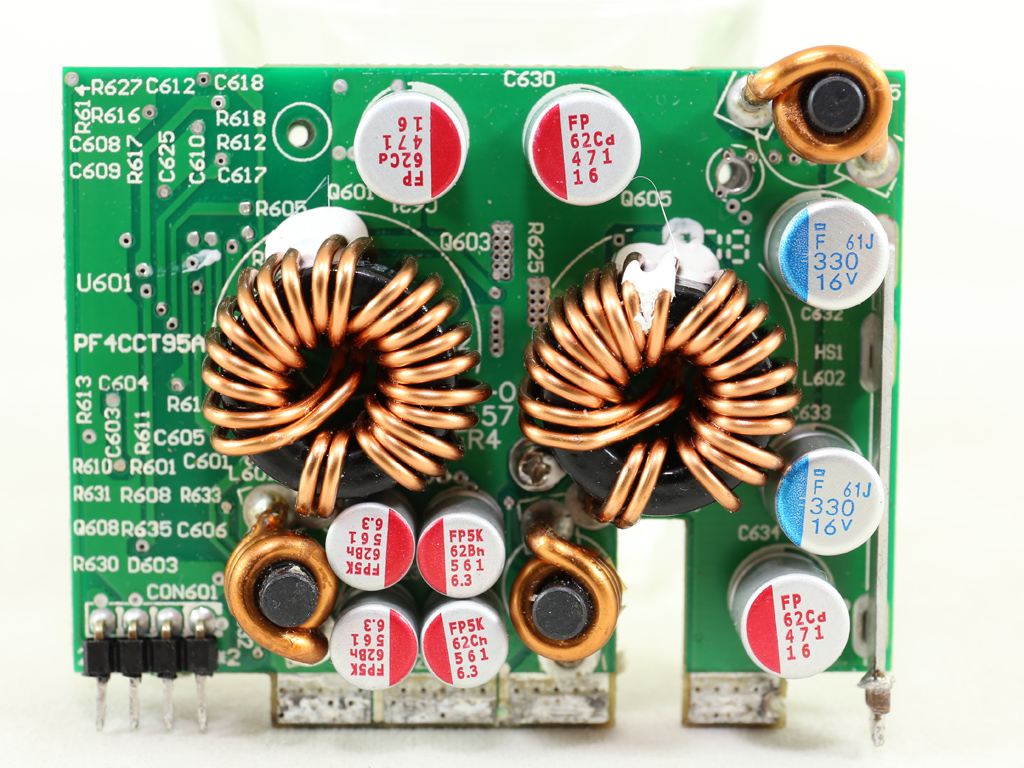
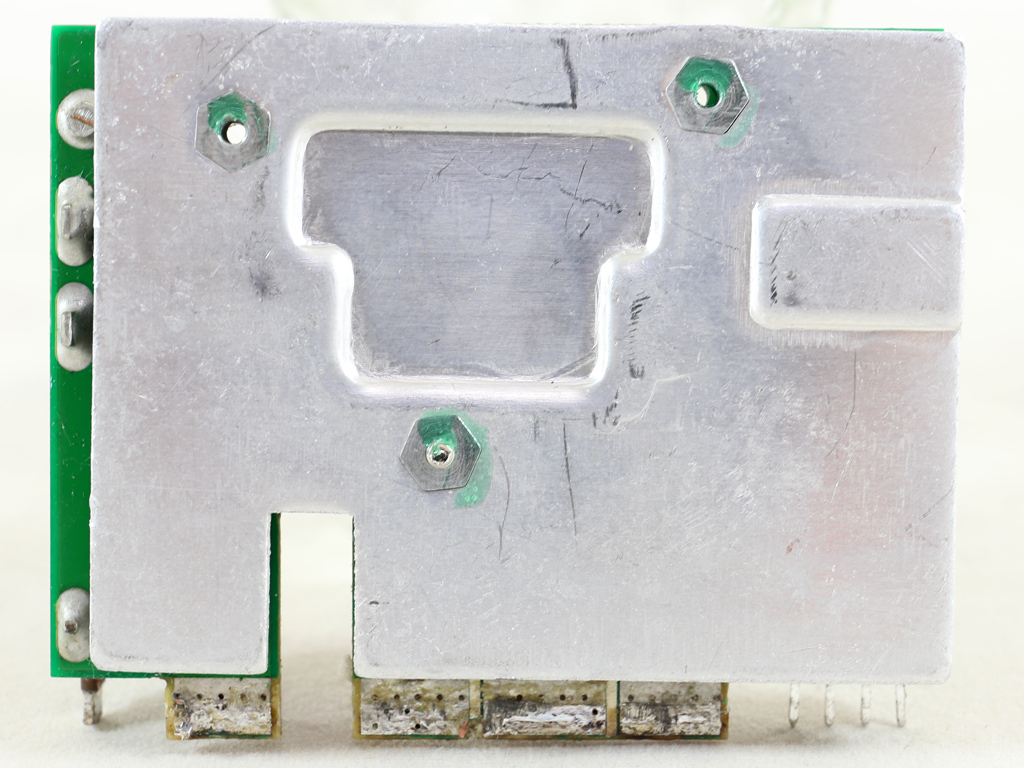
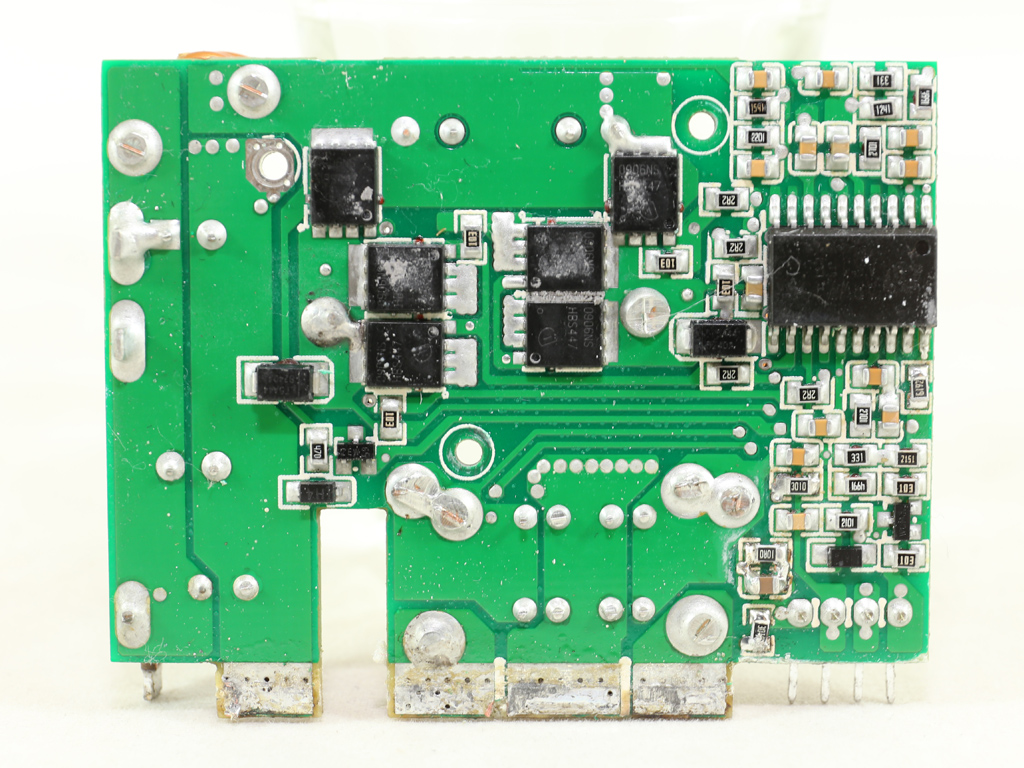
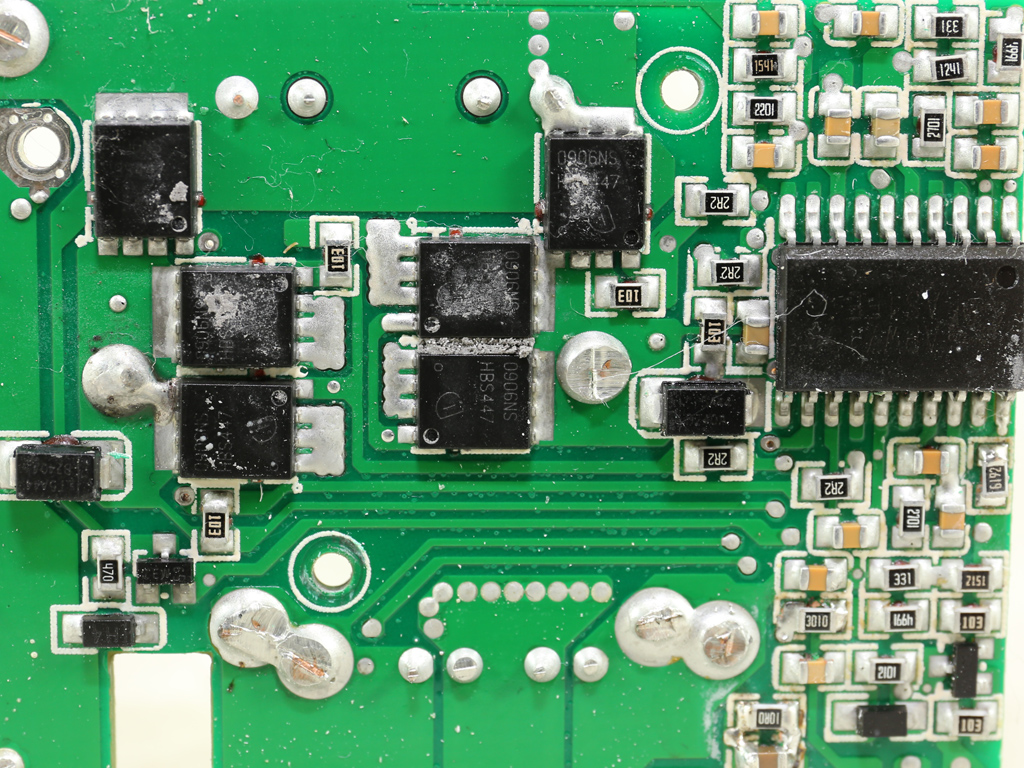
We had to fight with the board that holds the DC-DC converters in order to remove it and identify all relevant components. This board houses six Infineon BSC0906NS (30 V, 40 A @ 100 °C, 4.5 mΩ) FETs, and the common PWM controller is a Anpec APW7159 IC.
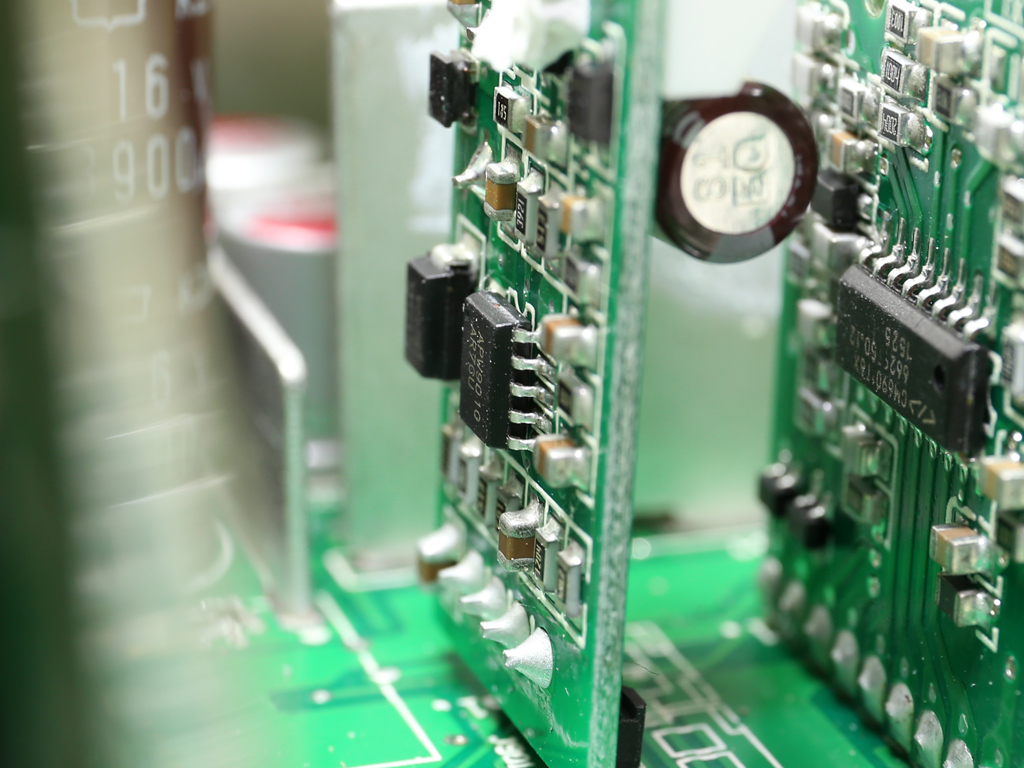
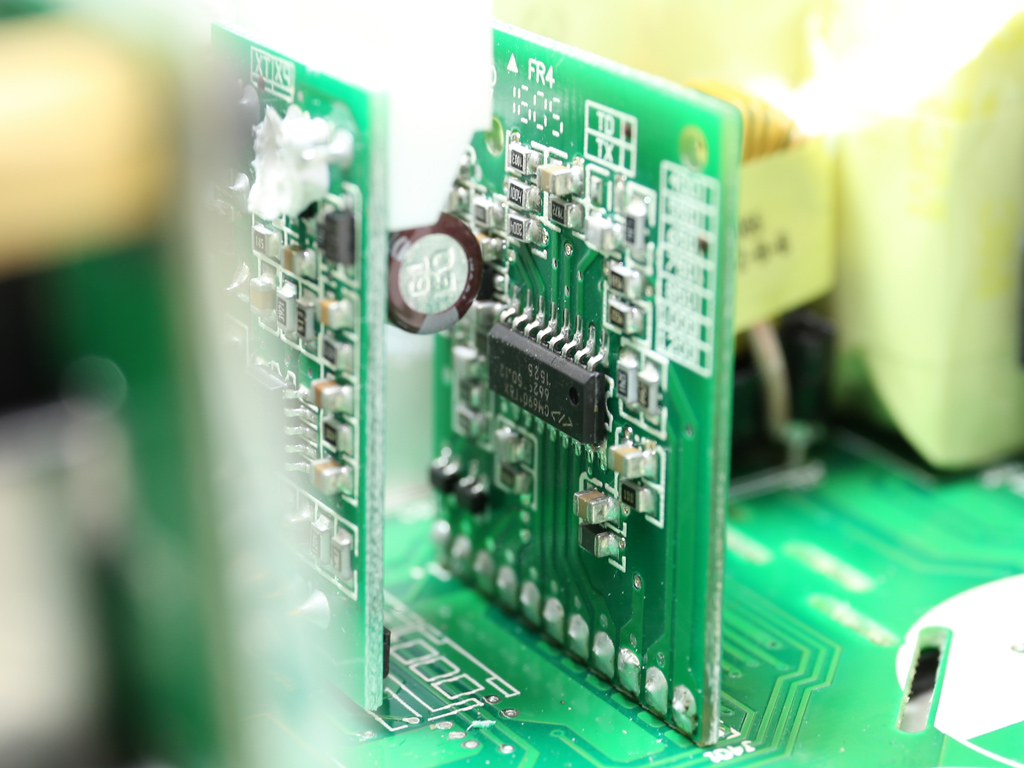
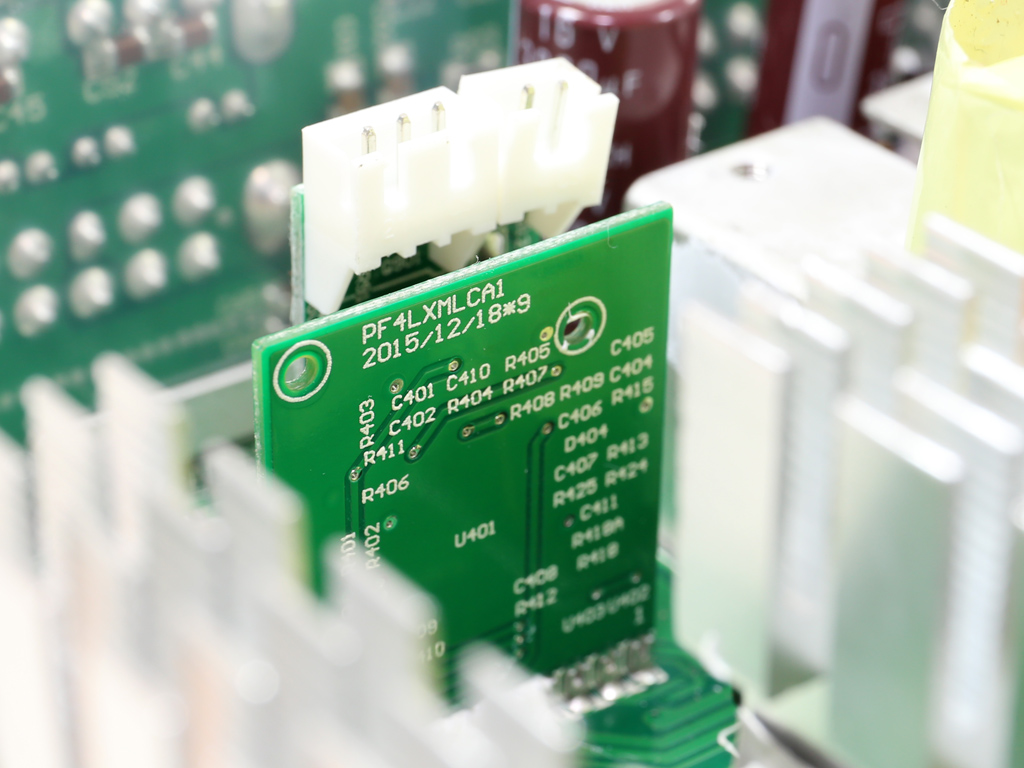
There's an APW9010 IC on the fan control board. The PCB right beside the fan control board houses the LLC resonant controller, a Champion CM6901.
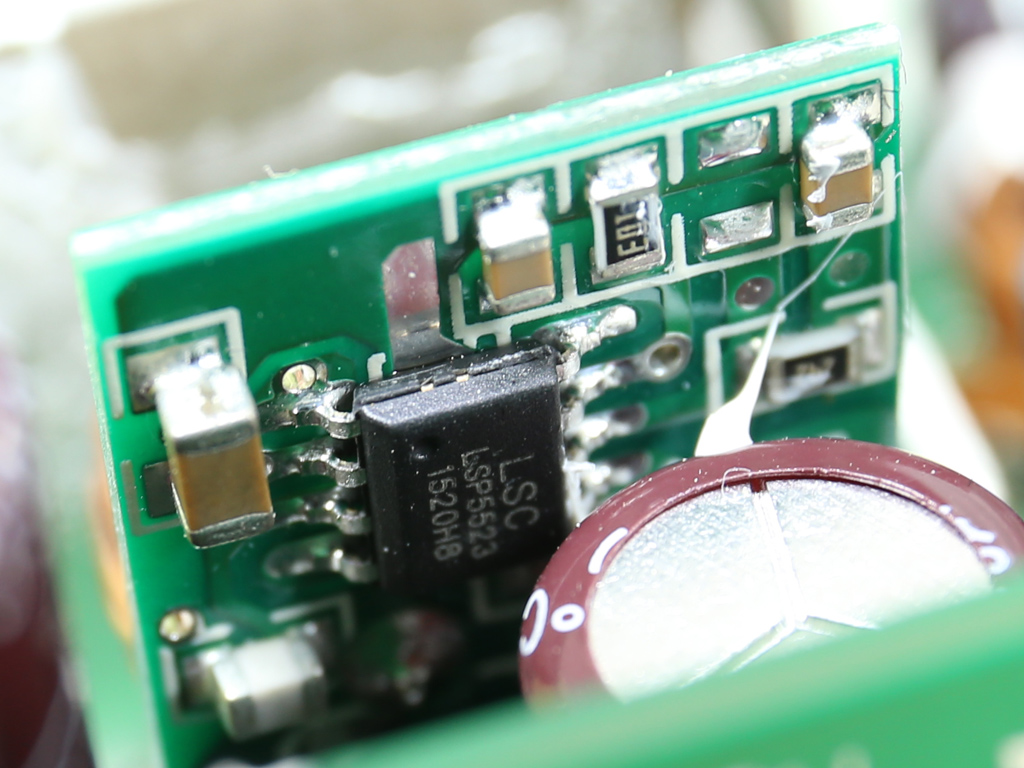

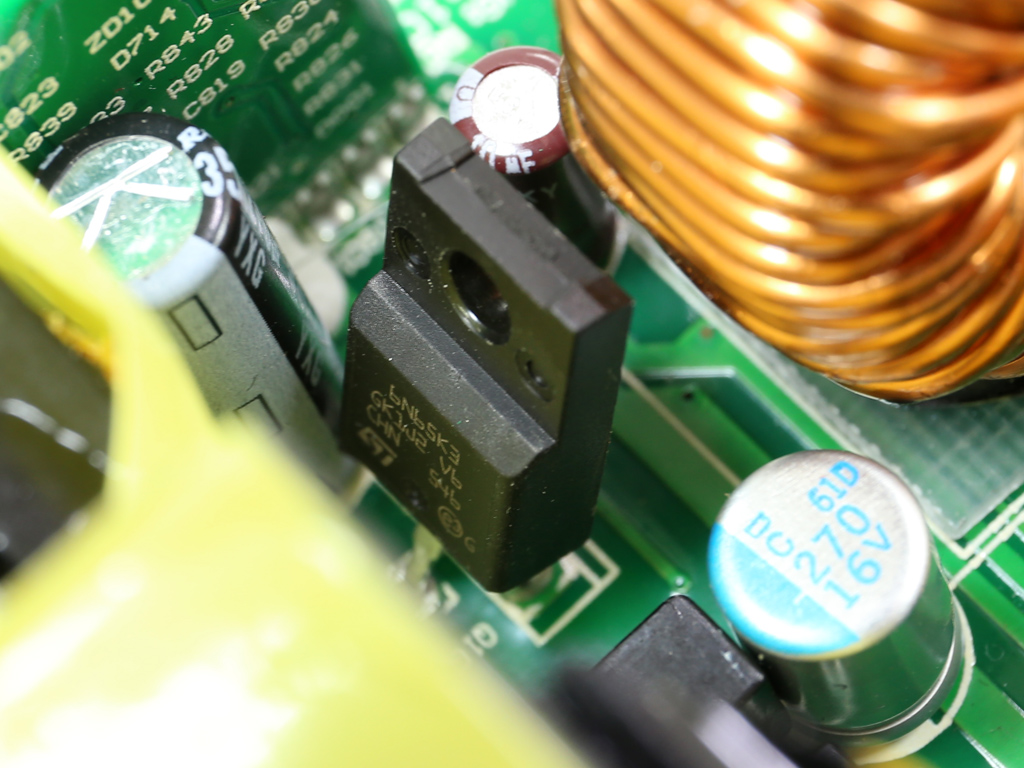
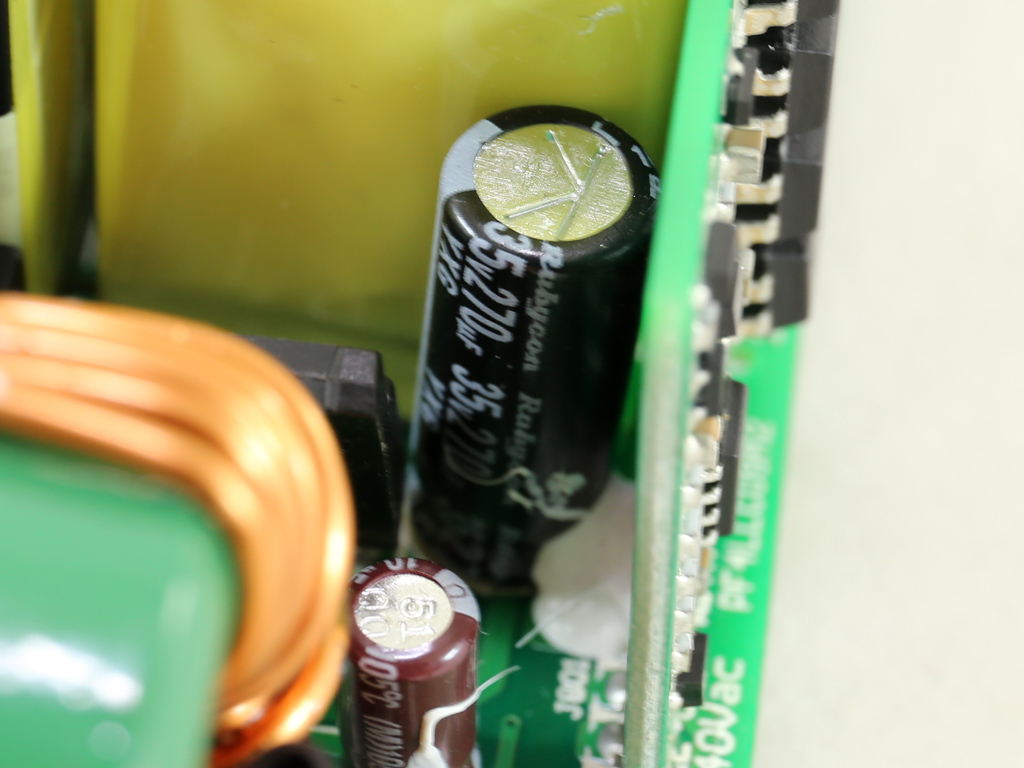
Another board on the secondary side has a Lite-On LSP5523 buck converter installed, which most likely handles the -12V rail. The 5VSB rail uses a Leadtrend LD7750R PWM controller, which is installed on the solder side of the main PCB. The same rail also uses a STU6N65K3 FET, provided by STMicroelectronics, while a single Rubycon cap is used for the its filtering.
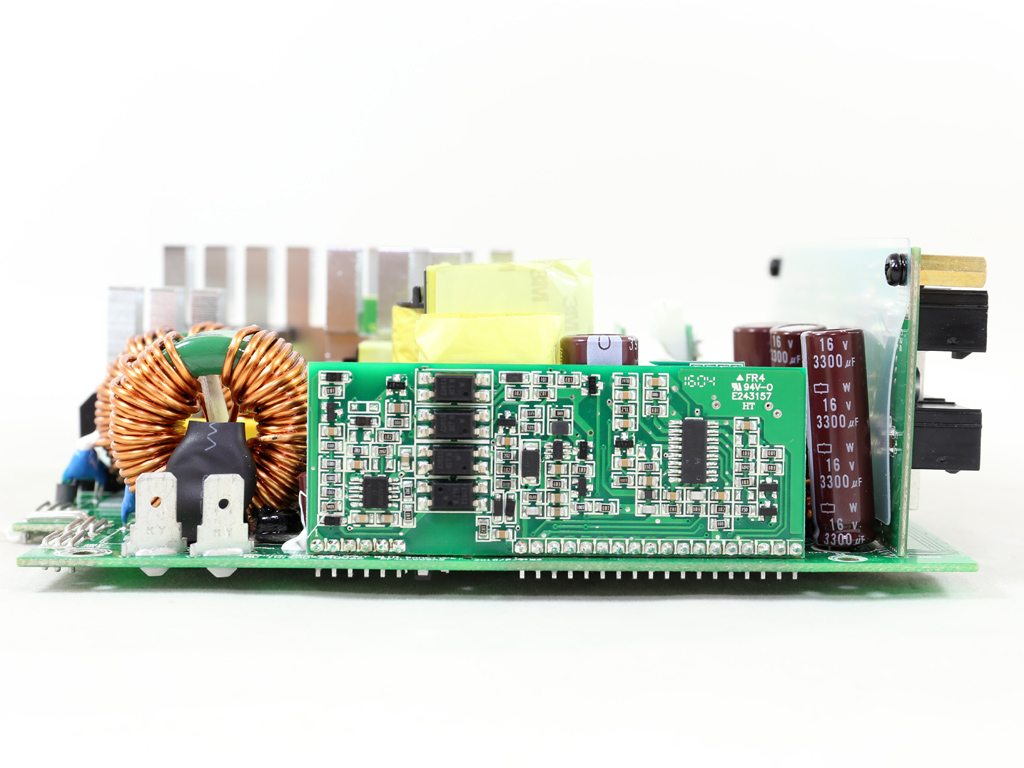
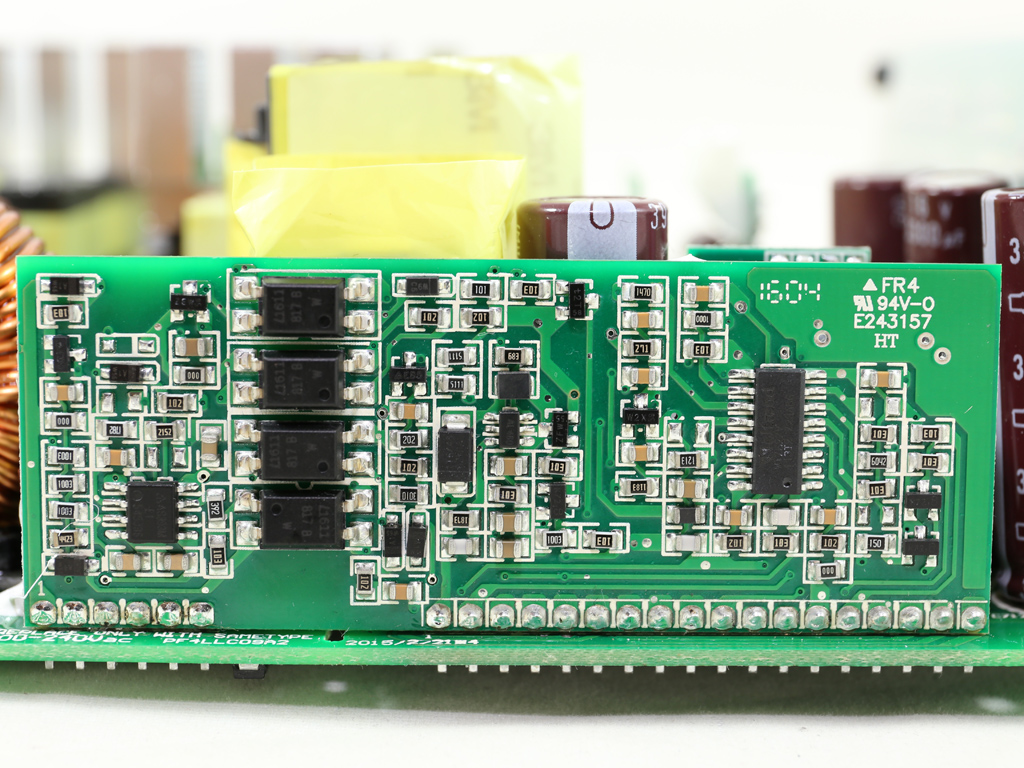
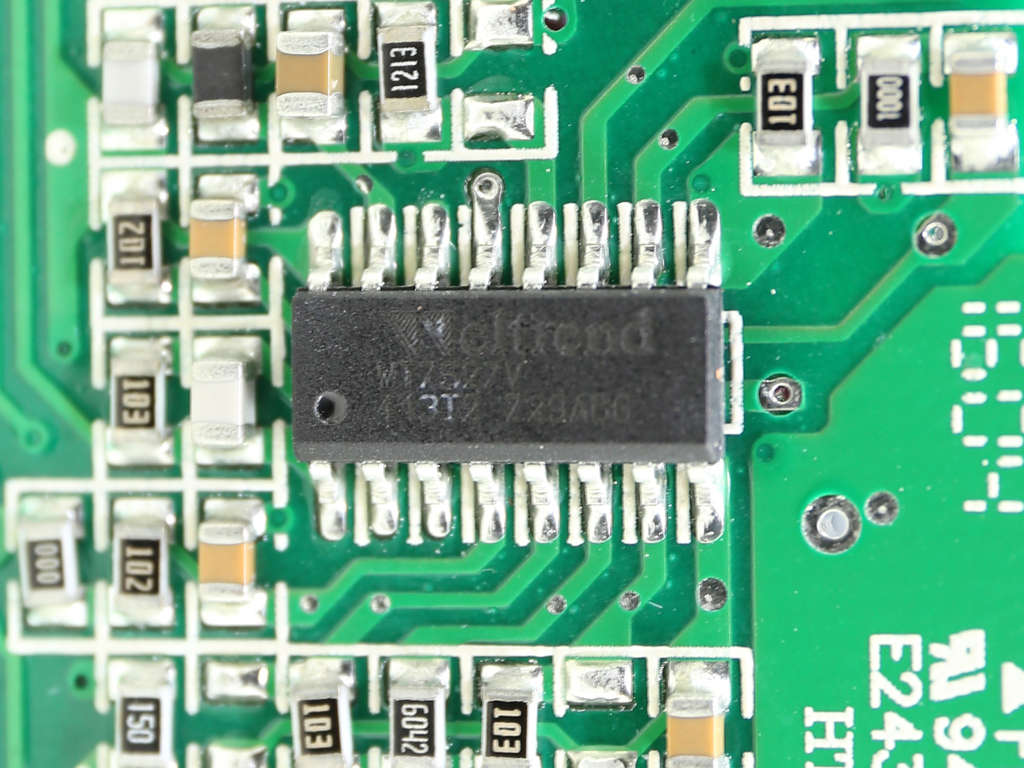
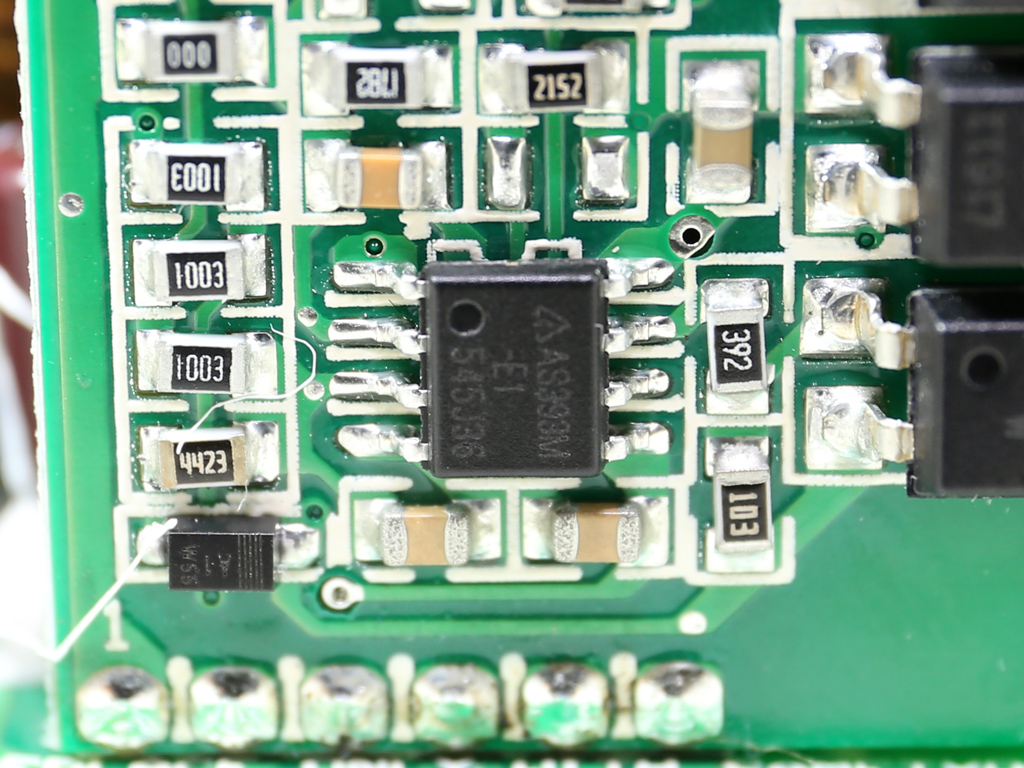
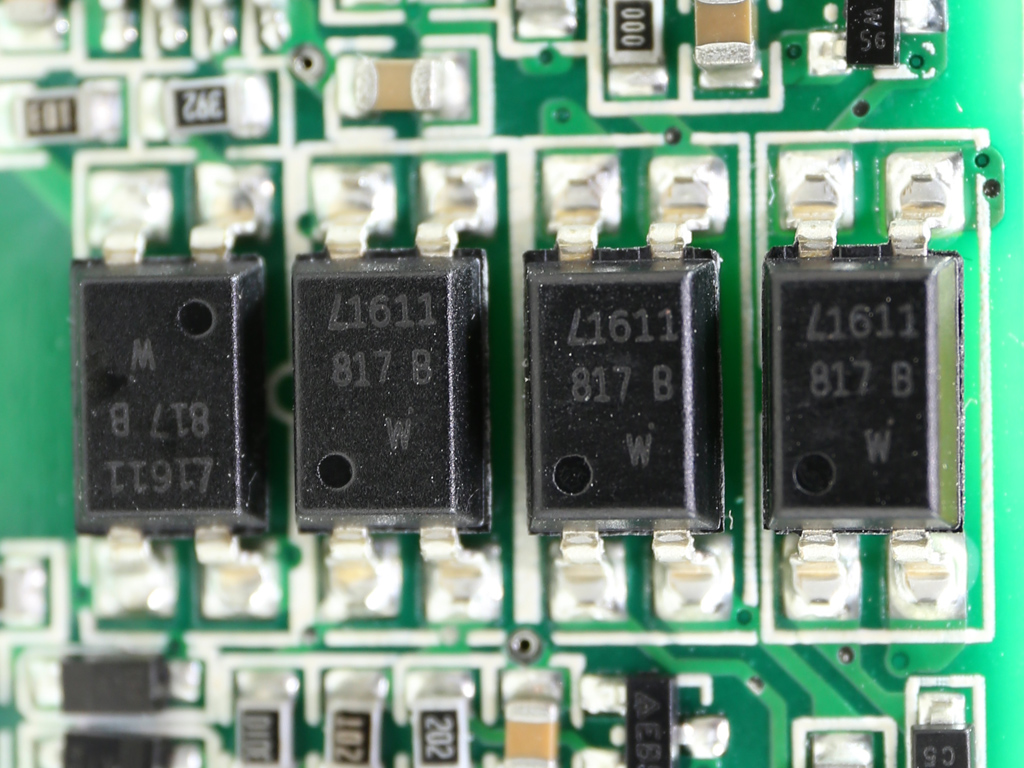
A daughterboard on the secondary side hosts the supervisor IC, a Weltrend WT7527V (OVP, UVP, OCP, SCP, PG), along with an AS393 dual-voltage comparator. The WT7257V supports OCP for up to two +12V virtual rails, through the SSR-650TD only has one. Between the WT7527V and the AS393, four optocouplers are installed for isolation purposes.
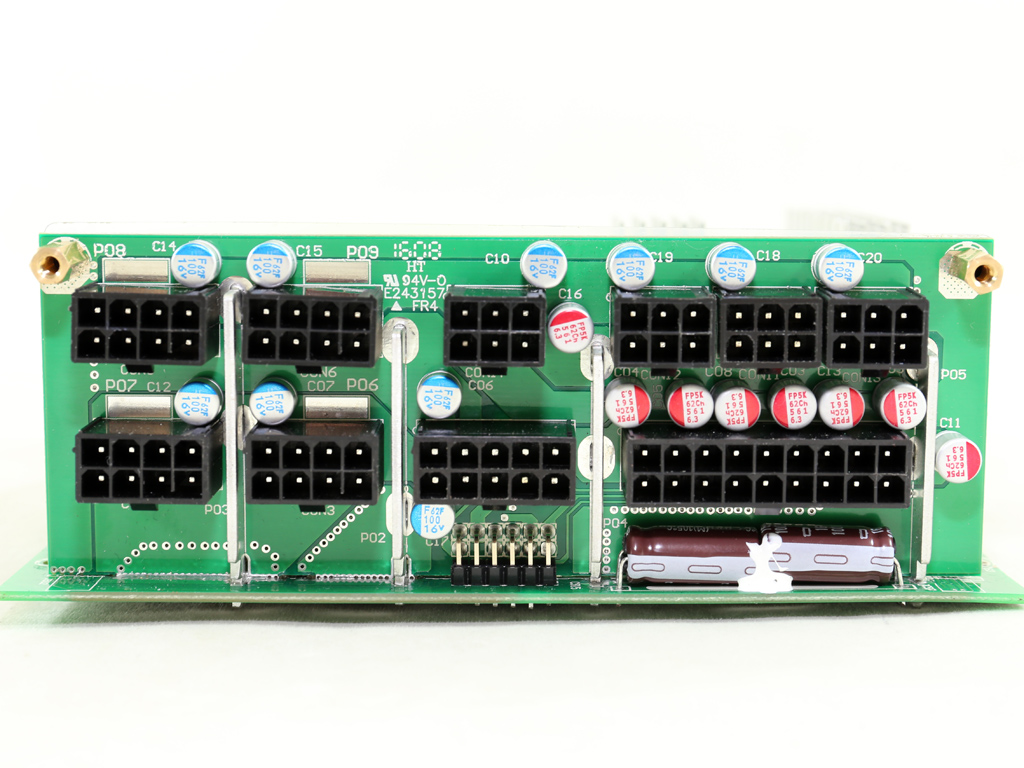
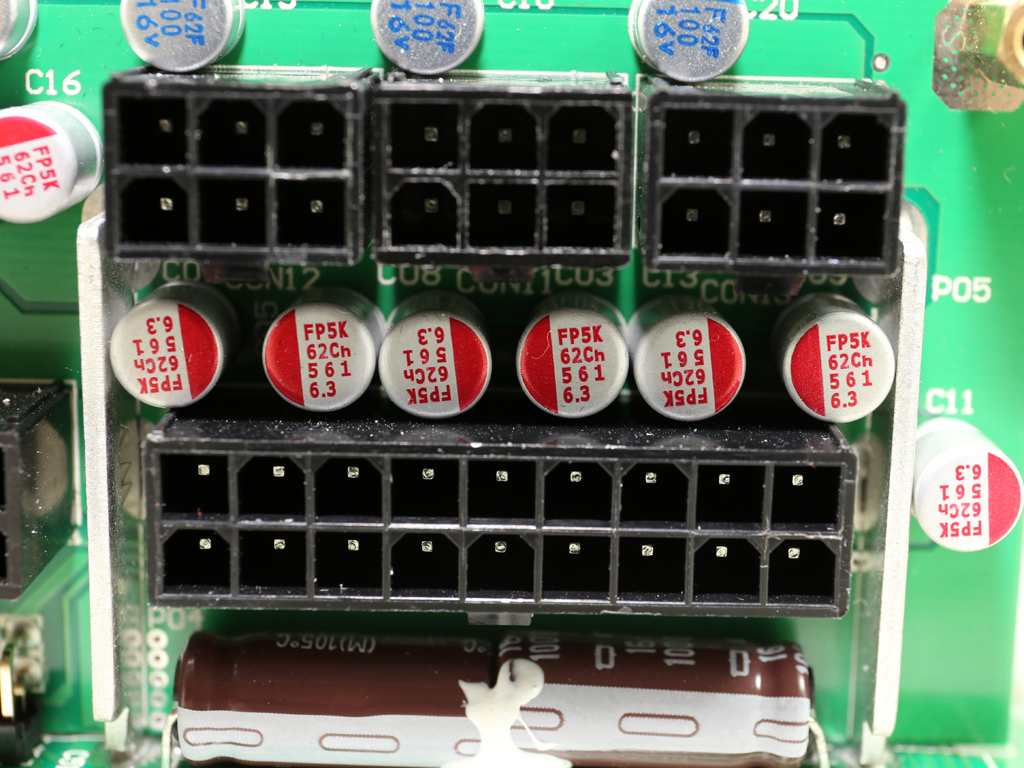
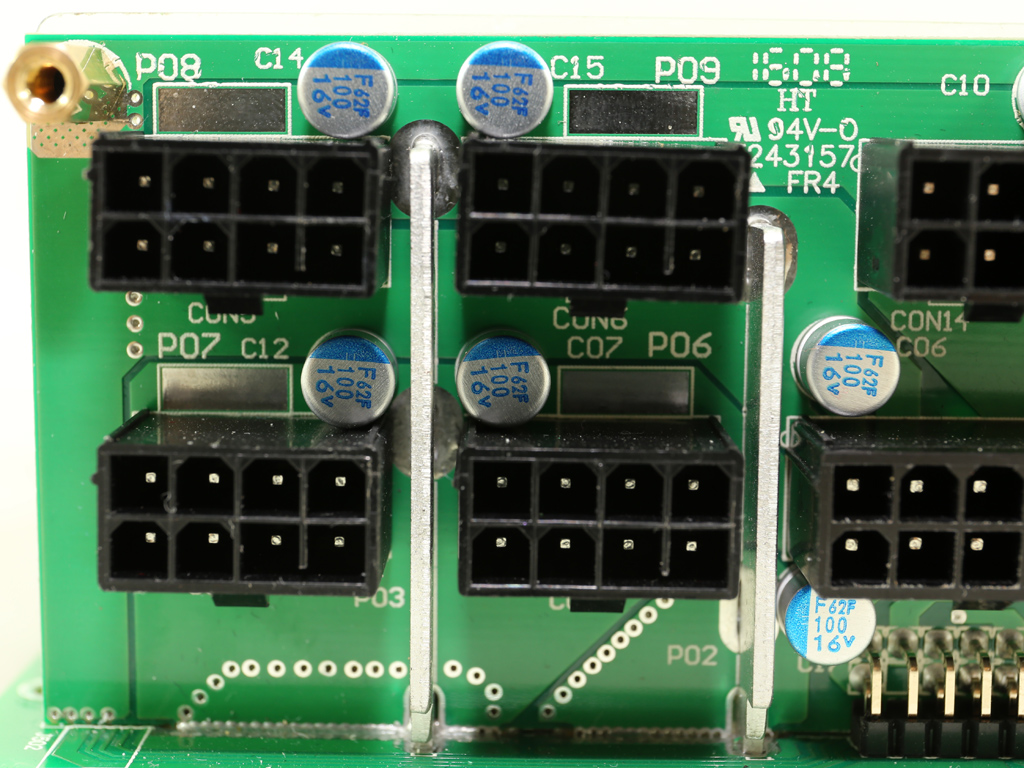
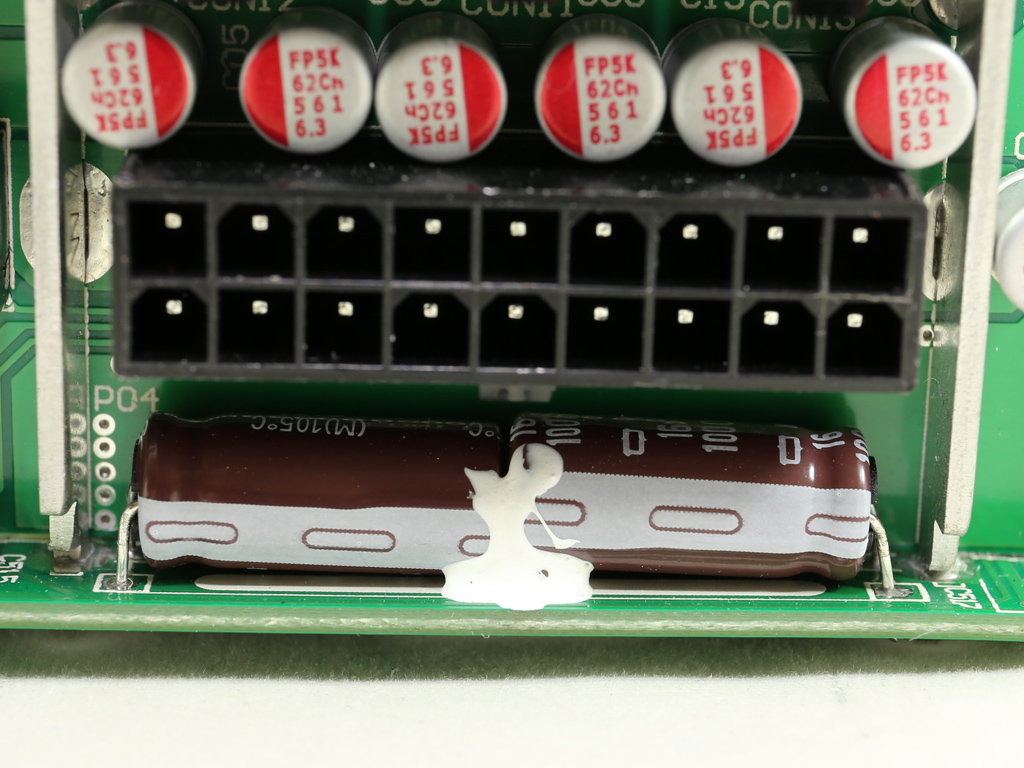
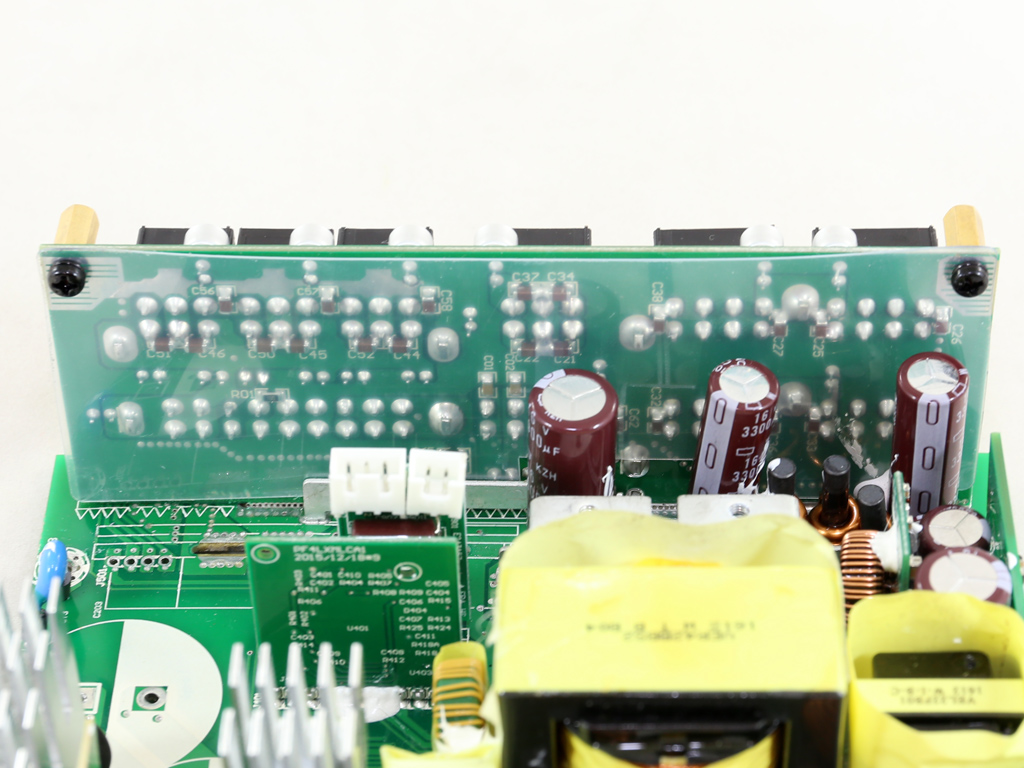
A number of FPCAP and Chemi-Con polymer caps, along with two electrolytic caps, filter the rails on the front of the modular board.
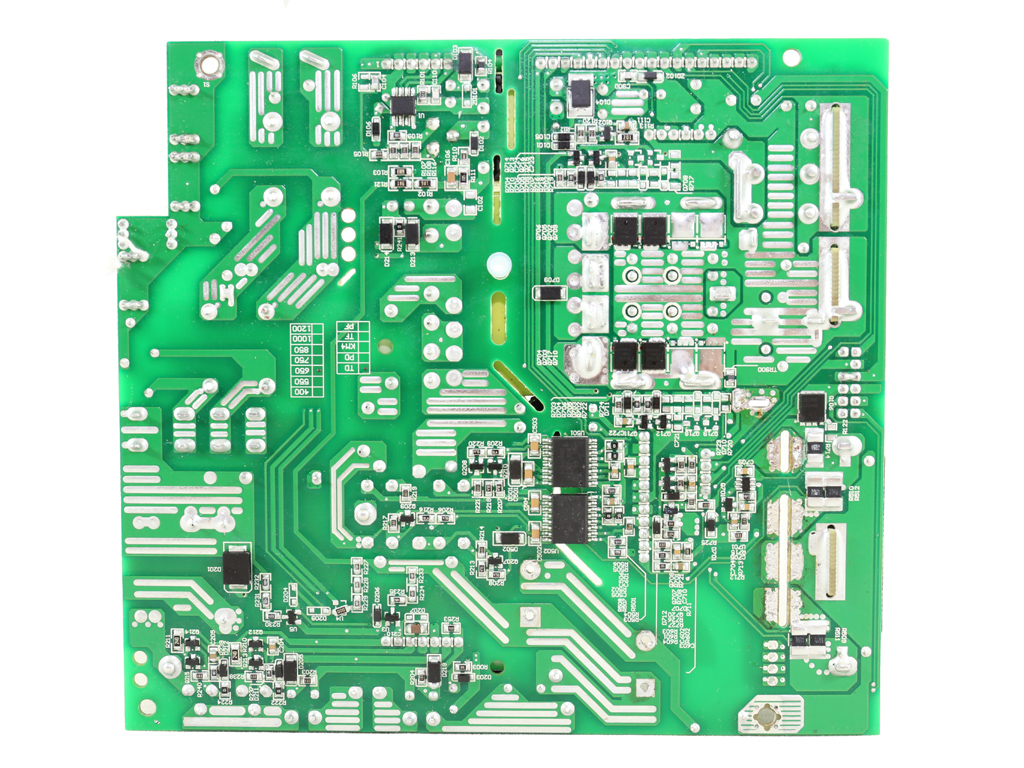
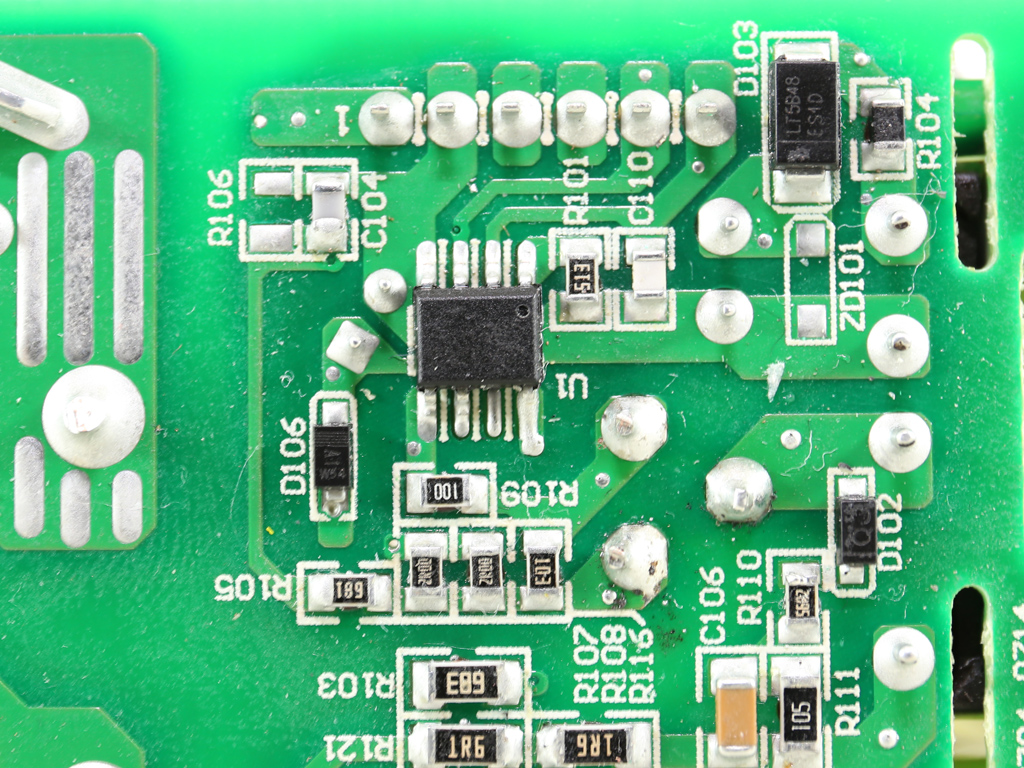
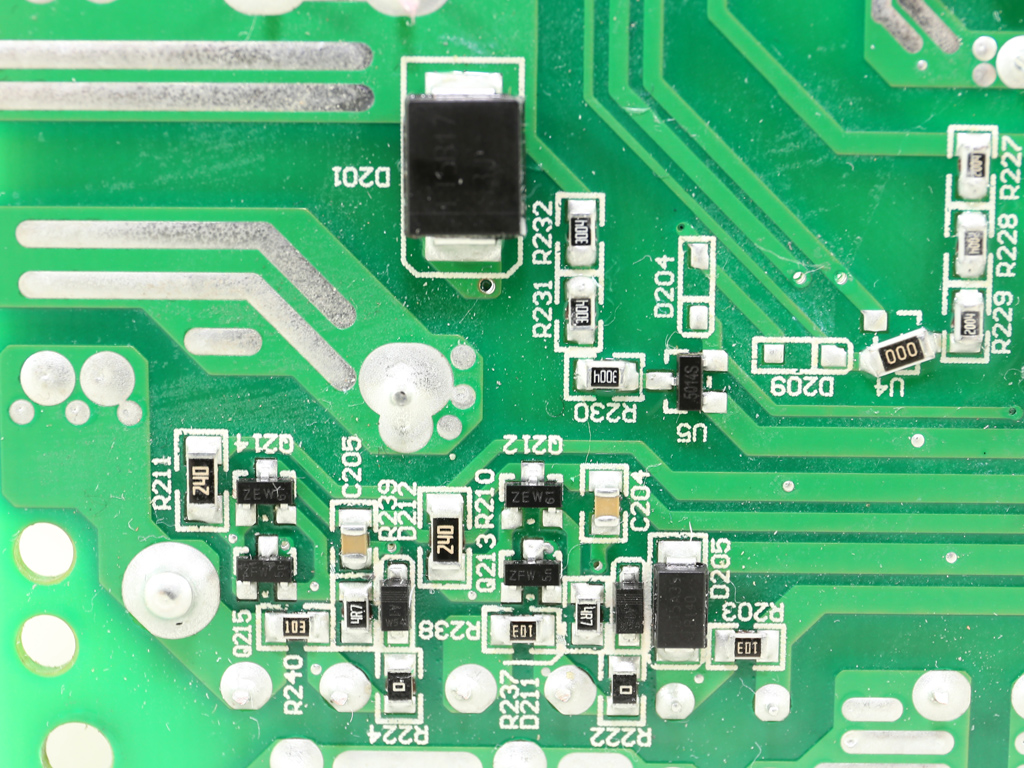
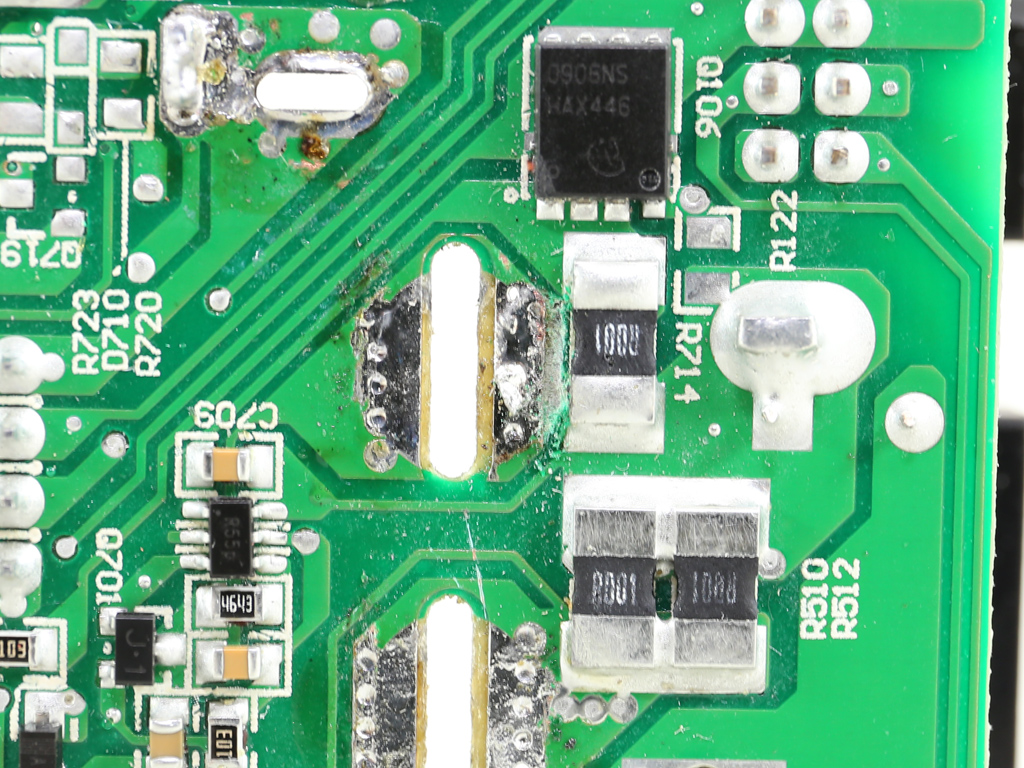
The soldering quality is good, although not the best we have seen from Seasonic.
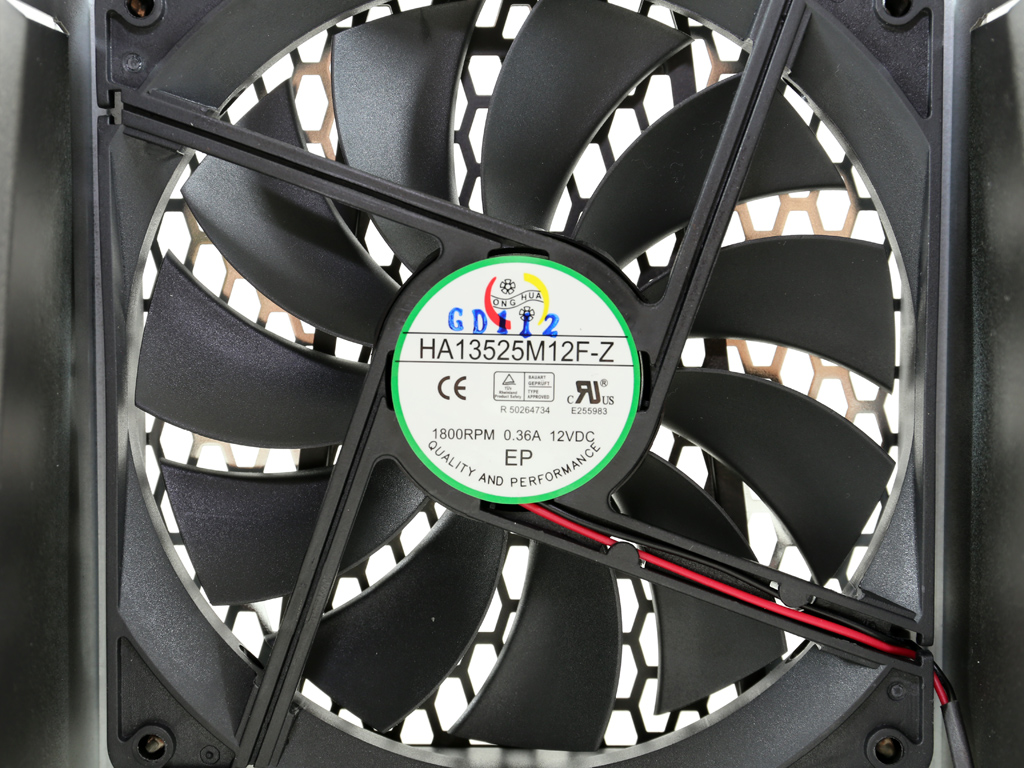
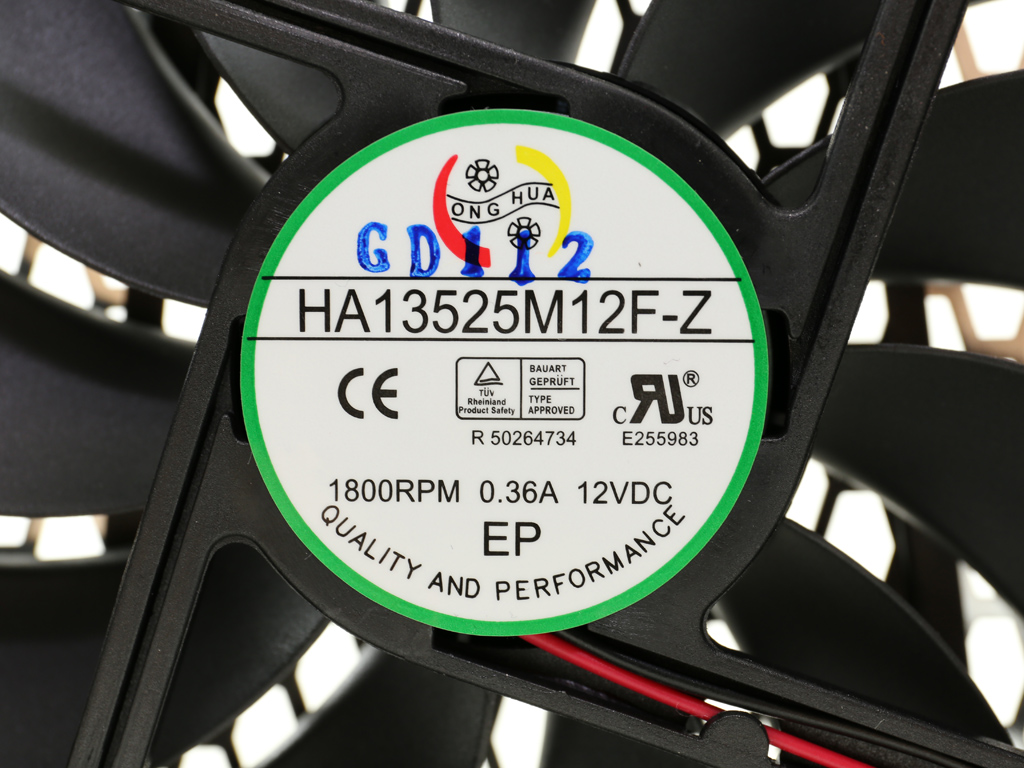
The cooling fan is provided by Seasonic's new favorite manufacturer, Hong Hua. Its model number is HA13525M12F-Z, and as we already explained, it uses a fluid dynamic bearing for increased lifetime. Seasonic speaks of 40,000 hours at 40 °C, so it should last a long time, especially if you consider the PSU's aggressively-enforced passive mode. At high speeds, this fan is loud. However, its profile is so loose that you will barely hear any noise coming from the fan, even if you deactivate the semi-passive mode.
Current page: A Look Inside And Component Analysis
Prev Page Packaging, Contents, Exterior, And Cabling Next Page Load Regulation, Hold-Up Time, And Inrush Current
Aris Mpitziopoulos is a contributing editor at Tom's Hardware, covering PSUs.
-
bharatwd 60 Ampere of inrush current is too high for 230 V countries. Wont that damage the other parts in the pc?Reply -
Aris_Mp It won't damage anything in the PC since it doesn't have to do anything with the PSU's secondary side. High inrush currents apply stress to the electrical infrastructure (switches, relays etc.)Reply -
bharatwd Hi Aris, thanks for the reply..............So it will basically hurt the PSU components itself?Reply -
turkey3_scratch My mind is blown. This is a great unit and I'm happy to see the transient response performance was good. HardOCP's testing on one of the Prime Titanium units shows not-so-good transient response performance.Reply
Whoops accidental upvote above. -
Aris_Mp Nope it won't hurt the PSU, just the breakers and electrical circuits before it will be stressed a bit.Reply
Haswell ready: I was thinking to change this to S6/S7 compatible. Probably the time has come for this to happen. -
bharatwd Thanks for the reply Aris........10 years warranty will be fun if the current inrush is at 60+ Ampere :) especially in India :)Reply -
Virtual_Singularity Excellent review. Impressive work/effort by Seasonic as well. Curious to see how the other units in this new line stack up to this one. Haven't seen HOCP's review yet, but there has been some variance in others, but still seems like a solid effort on Seasonic's part.Reply
With no capacitors in the cables, can't see a reason not to flatten the atx connector as well. I guess the sleeved atx connect look has become somewhat traditional. Not a criticism by any means, just saying. -
turkey3_scratch Reply18563170 said:Excellent review. Impressive work/effort by Seasonic as well. Curious to see how the other units in this new line stack up to this one. Haven't seen HOCP's review yet, but there has been some variance in others, but still seems like a solid effort on Seasonic's part.
With no capacitors in the cables, can't see a reason not to flatten the atx connector as well. I guess the sleeved atx connect look has become somewhat traditional. Not a criticism by any means, just saying.
On Jonnyguru Oklahomawolf likes the ATX cable to be sleeved and the others to be ribbon; this is because 24 wires can sometimes become difficult to manage in ribbon style versus sleeved. That's just his thinking at least, and I sort of understand where he comes from with that. If it's ribbon style that also makes it an extremely wide cable, whereas if it is sleeved it's more narrow for better cable routing and then widens up at the end. -
JackNaylorPE I find round sleeved cables much more difficult to manage, and the reason why many builders sleeve there own cables or use extensions. OTOH, the plain flat cables are just fugly, you can get the best of both worlds with flat, individually sleeved cables. Individually sleveed cables, with cable combs, offer the optimal combination of aesthetic choice and easier cable routing.Reply
I don't really understand the big "ooh wow" about Titanium rates PSUs; all it is is a "green" energy consumption rating and unless you pay well above the average US utility costs, you'll never get a positive ROI. What I don't understand is why "PSUs and cables" aren't offered as a "bundle". I hate paying a quality set of cable and then leaving them in a box. I'd like to see some PSU manufacturer "step up" and and say offer every PSU with a $xx coupon for a set of cables. The value of the coupon would cover the basic cable set so it would essentially come free with the PSU. OTOH, if you wanted to move up to a, individually sleeved set, you would only have to pay the difference between the base set and the set of your choice
http://www.frozencpu.com/products/18823/psu-cab-50/Corsair_Professional_Series_Individually_Sleeved_DC_Modular_Cable_Kit_Type_3_Generation_2_-_White_CP-8920050.html?tl=g2c413s1599
